Where Nobel Prize Winners Invest Their Money
50 People Who Deserve a Nobel Prize
by TBS Staff

thebestschools.org is an advertising-supported site. Featured or trusted partner programs and all school search, finder, or match results are for schools that compensate us. This compensation does not influence our school rankings, resource guides, or other editorially-independent information published on this site.
Are you ready to discover your college program?
Nobel Prizes are the Olympic gold medals of the mind. Just as the Olympic gold goes to the strongest, fastest, most skillful athletes, so the Nobel goes to strongest, fastest, most creative intellects.
Nobel Prizes are awarded to individuals who deserve the very highest level of recognition for their achievements in the natural sciences, in literature, in economics, and in statesmanship and political activism promoting peace and human well-being.
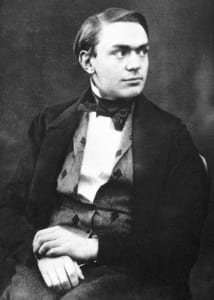 The prizes were established by the Swedish chemist, inventor, and entrepreneur, Alfred Nobel (1833--1896; left, aged 20), who became immensely wealthy thanks to his invention of dynamite.
The prizes were established by the Swedish chemist, inventor, and entrepreneur, Alfred Nobel (1833--1896; left, aged 20), who became immensely wealthy thanks to his invention of dynamite.
Originally, five awards were provided for out of Nobel's estate: in physics, chemistry, physiology or medicine, literature, and peace. The first prizes were handed out in 1901, and they have been awarded annually ever since, except during the two world wars. In 1969, a Nobel Memorial Prize in Economics was established by the Royal Bank of Sweden.
The Royal Swedish Academy of Sciences chooses the winners of the prizes for Physics, Chemistry, and Economics; the Karolinska Institute picks the winner in Physiology or Medicine; the Swedish Academy awards the prize for literature; and the Norwegian Nobel Committee decides on the Peace Prize.
Because there is no Nobel Prize for mathematics, we have included the Fields Medal in that discipline---which is often considered to be of equivalent prestige---in our list, for a total of seven prizes in all.
The Fields Medal was established in 1936, and is awarded by the International Mathematical Union. The medal is officially known as the International Medal for Outstanding Discoveries in Mathematics, but is informally named after Canadian mathematician John Charles Fields, who was instrumental in establishing and funding the prize.
The Fields Medal is awarded every four years to no more than four mathematicians below the age of 40 as of January 1 of the year of the award. Mathematicians receive this award for resolving an outstanding open problem or, in some cases, for developing powerful new methods for gaining novel insights into existing areas of mathematical research.
The Fields Medal is awarded at the quadrennial International Congress of Mathematicians, the next meeting being in 2018 in Rio de Janeiro. Because recipients of the award tend to be younger than Nobelists, our selection of potential Fields Medalists is based not strictly on accomplishment but also on promise of future accomplishment.
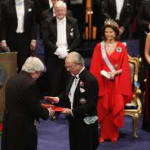 The Nobel Prizes are announced every year in October, and are awarded at a ceremony in Stockholm, Sweden, on December 10, except for the Peace Prize, which is awarded in Oslo, Norway, on the same day.
The Nobel Prizes are announced every year in October, and are awarded at a ceremony in Stockholm, Sweden, on December 10, except for the Peace Prize, which is awarded in Oslo, Norway, on the same day.
In past years, many of the Nobel Prizes have proven to be quite controversial.
Will this year's winners really deserve the Nobel Prize?
What about those who have clearly deserved a Nobel Prize for a long time, but have never won?
We expect that many of our recommendations will themselves be controversial. In making them, we hope both to draw attention to the work of the individuals we have recommended and to stimulate discussion about the merits of that work.
* * *
Note: This article was originally published in September of 2012. How have we done over the past five years with respect to the picks we made then?
We called two of the Nobel Prizes correctly: Peter Higgs won for Physics in 2013 and Martin Karplus won for Chemistry, also in 2013.
As for the Fields Medal, we called two winners for 2014: Artur Avila and Manjul Bhargava.
Sadly, two of our candidates for the Nobel Prize (which is never awarded posthumously) have died in the meantime: Chinua Achebe (Literature) in 2013 and Mildred Dresselhaus (Chemistry) in 2017.
Finally, three of our picks for the Fields Medal are now too old: Ben Joseph Green, Jacob Lurie, and Joseph Teran will all be 41 years old in 2018.
That makes a total nine new candidates who were needed for us to make up a full complement of 50 entries for our updated list (we saw no reason to demote anyone who was on the old list and who still qualified).
We have indicated the nine newbies in the list below with the word "new" next to their names. For the sake of documentation, we have also moved the nine original entries that have now been replaced to an appendix at the end of the article.
Physics | Chemistry | Physiology or Medicine | Literature
Peace | Economics | Mathematics
NOBEL PRIZE FOR PHYSICS
1. Yakir Aharonov (b. 1932)
 Aharonov was born in Haifa, in the British Mandate of Palestine (now the State of Israel). He received his PhD. in 1960 from Bristol University in the U.K., where he worked with David Bohm. He has taught at several prestigious universities in Israel and the U.S., and is currently the James J. Farley Professor of Natural Philosophy at Chapman University in California. He is best known for his co-discovery of the Aharonov-Bohm effect in 1959. In this phenomenon, the complex phase of a charged particle's wave function becomes coupled to an electromagnetic potential, in spite of the particle's being confined to a region in which the EM field has a zero value.
Aharonov was born in Haifa, in the British Mandate of Palestine (now the State of Israel). He received his PhD. in 1960 from Bristol University in the U.K., where he worked with David Bohm. He has taught at several prestigious universities in Israel and the U.S., and is currently the James J. Farley Professor of Natural Philosophy at Chapman University in California. He is best known for his co-discovery of the Aharonov-Bohm effect in 1959. In this phenomenon, the complex phase of a charged particle's wave function becomes coupled to an electromagnetic potential, in spite of the particle's being confined to a region in which the EM field has a zero value.
- Web resource: Yakir Aharonov's Home Page
2. Alain Aspect (b. 1947)
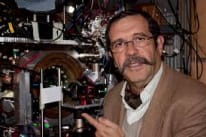 Aspect was born in Agen, a town in the Aquitaine region of southwestern France. He graduated from a regional university and was working as a lecturer in 1982 when he led a team that performed experiments confirming the correctness of Bell's Theorem, stating that either the realism condition or the locality condition on elementary particles must fail. Aspect's experimental apparatus was of the two-channel type, in which a light source is split into two beams, which are then passed through polarisers with randomized settings. When the polarities of the two beams were subsequently measured, they were found to be statistically correlated. This finding has been interpreted to mean that the locality condition is indeed violated (quantum non-locality is real). Today, Aspect is a Research Director at the prestigious National Center for Scientific Research (CNRS), in Paris. Aspect also holds the Augustin Fresnel Chair at the Institut d'Optique and is also a Professor at the École Polytechnique, both in Paris.
Aspect was born in Agen, a town in the Aquitaine region of southwestern France. He graduated from a regional university and was working as a lecturer in 1982 when he led a team that performed experiments confirming the correctness of Bell's Theorem, stating that either the realism condition or the locality condition on elementary particles must fail. Aspect's experimental apparatus was of the two-channel type, in which a light source is split into two beams, which are then passed through polarisers with randomized settings. When the polarities of the two beams were subsequently measured, they were found to be statistically correlated. This finding has been interpreted to mean that the locality condition is indeed violated (quantum non-locality is real). Today, Aspect is a Research Director at the prestigious National Center for Scientific Research (CNRS), in Paris. Aspect also holds the Augustin Fresnel Chair at the Institut d'Optique and is also a Professor at the École Polytechnique, both in Paris.
- Read more about Aspect in our article: "The 50 Most Influential Scientist in the World Today."
- Web resource: Alain Aspect's Home Page
3. Vitaly Efimov (b. 1938)
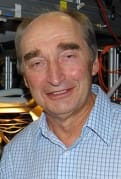 Efimov was born in Leningrad (now St. Petersburg), in the former Soviet Union, and received his Ph.D. in theoretical physics from the A.F. Ioffe Physico-Technical Institute there in 1966. His advisors were Miron Ya. Amusia and Lev A. Sliv. He relocated to the U.S. in 1989, and is currently an affiliate professor at the University of Washington. In 1970, while a junior scientist at the Ioffe Institute, he published a landmark paper predicting that a stable quantum state of matter exists consisting of three atoms, no two of which are stable in the absence of the third. Such "Efimov states," or "Efimov trimers," have been likened to Borromean rings (above). Widely disbelieved at the time it was made, Efimov's prediction was confirmed in 2006 when such quantum trimers of cesium atoms were experimentally observed at very low temperatures by a team at the University of Innsbruck, in Austria.
Efimov was born in Leningrad (now St. Petersburg), in the former Soviet Union, and received his Ph.D. in theoretical physics from the A.F. Ioffe Physico-Technical Institute there in 1966. His advisors were Miron Ya. Amusia and Lev A. Sliv. He relocated to the U.S. in 1989, and is currently an affiliate professor at the University of Washington. In 1970, while a junior scientist at the Ioffe Institute, he published a landmark paper predicting that a stable quantum state of matter exists consisting of three atoms, no two of which are stable in the absence of the third. Such "Efimov states," or "Efimov trimers," have been likened to Borromean rings (above). Widely disbelieved at the time it was made, Efimov's prediction was confirmed in 2006 when such quantum trimers of cesium atoms were experimentally observed at very low temperatures by a team at the University of Innsbruck, in Austria.
- Web resource: Vitaly Efimov's Home Page
4. Mitchell J. Feigenbaum (b. 1944) NEW
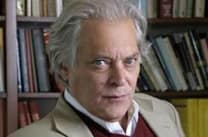 Feigenbaum was born in New York City to Eastern-European Jewish immigrant parents. He was educated in Brooklyn and at the City College of New York. He received his Ph.D. in physics in 1970 from MIT. After several short-term academic appointments, he landed a job with the Los Alamos National Laboratory in New Mexico to study the difficult problem of turbulence in fluids. Since 1986 Feigenbaum has resided in New York City once again, where he is the Toyota Professor of Physical, Mathematical, and Computational Biology at Rockefeller University. Although he was unable to solve the general problem of turbulence in fluid dynamics (which remains unsolved to this day), the work upon which his reputation would eventually be based grew directly out of his work on turbulence at Los Alamos. In 1975, while studying the pattern of period-doubling bifurcations of the logistic map, Feigenbaum noticed that the ratio of the difference between the values at which such successive bifurcations occur tends to a constant of about 4.6692. He soon saw that this number---now known as the "first Feigenbaum constant"---should occur within a wide class of mathematical functions (nonlinear dynamical systems), presaging the transition of the system to the chaotic regime (turbulence). This was the first universality class discovered for nonlinear systems, making their study more tractable mathematically, and so more useful in practical applications. Around 1980, working with a Rayleigh-Bénard system, Albert Libchaber experimentally confirmed Feigenbaum's predictions---work for which both scientists shared the prestigious Wolf Prize in Physics for 1986.
Feigenbaum was born in New York City to Eastern-European Jewish immigrant parents. He was educated in Brooklyn and at the City College of New York. He received his Ph.D. in physics in 1970 from MIT. After several short-term academic appointments, he landed a job with the Los Alamos National Laboratory in New Mexico to study the difficult problem of turbulence in fluids. Since 1986 Feigenbaum has resided in New York City once again, where he is the Toyota Professor of Physical, Mathematical, and Computational Biology at Rockefeller University. Although he was unable to solve the general problem of turbulence in fluid dynamics (which remains unsolved to this day), the work upon which his reputation would eventually be based grew directly out of his work on turbulence at Los Alamos. In 1975, while studying the pattern of period-doubling bifurcations of the logistic map, Feigenbaum noticed that the ratio of the difference between the values at which such successive bifurcations occur tends to a constant of about 4.6692. He soon saw that this number---now known as the "first Feigenbaum constant"---should occur within a wide class of mathematical functions (nonlinear dynamical systems), presaging the transition of the system to the chaotic regime (turbulence). This was the first universality class discovered for nonlinear systems, making their study more tractable mathematically, and so more useful in practical applications. Around 1980, working with a Rayleigh-Bénard system, Albert Libchaber experimentally confirmed Feigenbaum's predictions---work for which both scientists shared the prestigious Wolf Prize in Physics for 1986.
- Web resource: Mitchell J. Feigenbaum's Home Page
5. Alan Guth (b. 1947)
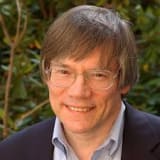 Guth was born in New Brunswick, New Jersey. He received his Ph.D. from MIT in 1972, and has taught at Princeton, Columbia, Cornell, and Stanford. He is currently the Victor F. Weisskopf Professor of Physics at MIT, his alma mater. Guth began his career working in particle physics, but soon switched to cosmology. In 1979, he began developing the theory that would become known as "cosmic inflation," and first published his work in 1981. Cosmic inflation is the idea that at a very early time (approximately 10-36 s. after the Big Bang) the universe passed through a phase of exponentially rapid expansion. Guth theorized that this expansion was driven by a positive vacuum energy density (negative vacuum pressure). In 2006, an orbiting telescope---the Wilkinson Microwave Anisotropy Probe (WMAP)---provided observational evidence corroborating the cosmic inflation hypothesis.
Guth was born in New Brunswick, New Jersey. He received his Ph.D. from MIT in 1972, and has taught at Princeton, Columbia, Cornell, and Stanford. He is currently the Victor F. Weisskopf Professor of Physics at MIT, his alma mater. Guth began his career working in particle physics, but soon switched to cosmology. In 1979, he began developing the theory that would become known as "cosmic inflation," and first published his work in 1981. Cosmic inflation is the idea that at a very early time (approximately 10-36 s. after the Big Bang) the universe passed through a phase of exponentially rapid expansion. Guth theorized that this expansion was driven by a positive vacuum energy density (negative vacuum pressure). In 2006, an orbiting telescope---the Wilkinson Microwave Anisotropy Probe (WMAP)---provided observational evidence corroborating the cosmic inflation hypothesis.
- Read more about Guth in our article: "The 50 Most Influential Scientist in the World Today."
- Web resource: Alan Guth's Home Page
6. Lene Vestergaard Hau (b. 1959)
 Hau was born in Denmark, and received her Ph.D. from the University of Aarhus in 1991. She was a post-doctoral fellow at Harvard University, and taught at Cambridge University, before returning to Harvard, where she is now the Mallinckrodt Professor of Physics and Applied Physics. In 1999, Hau's team at Harvard was able to slow a beam of light down to about 17 meters per second by manipulating the photons using ultra-cold superfluids and Bose-Einstein condensates. In 2001, they succeeded in halting a beam of light altogether, then releasing it. In more recent work, Hau has experimented with encrypting and transmitting information with these techniques. Though it remains highly experimental, her work has the potential to revolutionize all forms of communication and information processing, perhaps even providing the basis for quantum computation.
Hau was born in Denmark, and received her Ph.D. from the University of Aarhus in 1991. She was a post-doctoral fellow at Harvard University, and taught at Cambridge University, before returning to Harvard, where she is now the Mallinckrodt Professor of Physics and Applied Physics. In 1999, Hau's team at Harvard was able to slow a beam of light down to about 17 meters per second by manipulating the photons using ultra-cold superfluids and Bose-Einstein condensates. In 2001, they succeeded in halting a beam of light altogether, then releasing it. In more recent work, Hau has experimented with encrypting and transmitting information with these techniques. Though it remains highly experimental, her work has the potential to revolutionize all forms of communication and information processing, perhaps even providing the basis for quantum computation.
- Read more about Hau in our article: "The 50 Most Influential Scientist in the World Today."
- Web resource: Lene Vestergaard Hau's Home Page
7. Lev P. Pitaevskii (b. 1933)
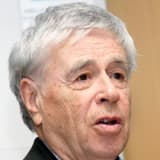 Pitaevskii (or Pitayevsky) was born in Saratov, in the former Soviet Union. He graduated from the university there in 1955. In 1958, he entered the prestigious Institute for Physical Problems in Moscow (later, the Kapitsa Institute), where he studied under the celebrated physicist Lev D. Landau. He currently teaches at the Kapitsa Institute and at the University of Trento, in Italy. In 1961, he published an equation (independently discovered the same year by Eugene P. Gross), which has become the standard formalism for treating Bose-Einstein condensates (BEC), whose existence had been predicted by S.N. Bose and Albert Einstein in the 1920s. A BEC is a very-low-temperature state of matter in which distinct bosons (elementary or composite particles having integer spin) merge, occupying the same quantum state. In 1995, the first gaseous BEC, consisting of rubidium atoms, was observed experimentally at the University of Colorado---Boulder.
Pitaevskii (or Pitayevsky) was born in Saratov, in the former Soviet Union. He graduated from the university there in 1955. In 1958, he entered the prestigious Institute for Physical Problems in Moscow (later, the Kapitsa Institute), where he studied under the celebrated physicist Lev D. Landau. He currently teaches at the Kapitsa Institute and at the University of Trento, in Italy. In 1961, he published an equation (independently discovered the same year by Eugene P. Gross), which has become the standard formalism for treating Bose-Einstein condensates (BEC), whose existence had been predicted by S.N. Bose and Albert Einstein in the 1920s. A BEC is a very-low-temperature state of matter in which distinct bosons (elementary or composite particles having integer spin) merge, occupying the same quantum state. In 1995, the first gaseous BEC, consisting of rubidium atoms, was observed experimentally at the University of Colorado---Boulder.
- Web resource: Lev P. Pitaevskii's Home Page
NOBEL PRIZE FOR CHEMISTRY
8. Allen J. Bard (b. 1933)
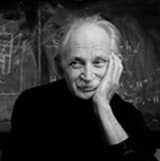 Bard was born in New York City, where he attended the famed Bronx High School of Science. He was further educated at City College of New York and at Harvard University, where he obtained his Ph.D. in 1958. He joined the faculty of the University of Texas at Austin that same year, where he has remained ever since. He now holds the Hackerman-Welch Regents Chair in Chemistry there. Bard and his team invented the scanning electrochemical microscope, which makes possible the high-resolution imaging and study of surfaces and chemical reactions at the nanometer scale. A pioneer in techniques for studying and manipulating individual molecules, Bard's work has led to many applications in medicine (identification of cancer cells) and alternative energy technology (semiconductors for solar cells).
Bard was born in New York City, where he attended the famed Bronx High School of Science. He was further educated at City College of New York and at Harvard University, where he obtained his Ph.D. in 1958. He joined the faculty of the University of Texas at Austin that same year, where he has remained ever since. He now holds the Hackerman-Welch Regents Chair in Chemistry there. Bard and his team invented the scanning electrochemical microscope, which makes possible the high-resolution imaging and study of surfaces and chemical reactions at the nanometer scale. A pioneer in techniques for studying and manipulating individual molecules, Bard's work has led to many applications in medicine (identification of cancer cells) and alternative energy technology (semiconductors for solar cells).
- Read more about Bard in our article: "The 50 Most Influential Scientist in the World Today."
- Web resource: Allen J. Bard's Home Page
9. Jennifer A. Doudna (b. 1964) NEW
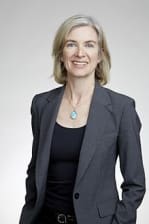 Doudna is Professor of Chemistry and of Molecular and Cell Biology at the Department of Chemistry and Chemical Engineering of the University of California, Berkeley. She received her Ph.D. in Biochemistry from Harvard University, where she worked on ribozymes with the renowned, Nobel Prize--winning physiologist Jack Szostak. She also did a postdoc at the University of Colorado Boulder with Thomas Cech, the Nobel Prize--winning chemist who originally discovered ribozymes. In the lab she has run at Berkeley since 2002, she first concentrated on structural studies of ribozymes, the IRES (internal ribosome entry site), and protein-RNA complexes such as the SRP (signal recognition particle). More recently, her lab has focused on three systems: prokaryotic DNA sequences known as CRISPRs (clustered regularly interspaced short palindromic repeats), RNA interference, and micro-RNAs. Working together with Emmanuelle Charpentier of the Max Planck Institute in Berlin, and in fierce competition with another group at the Broad Institute (a joint venture between Harvard and MIT) in Cambridge, Mass., Doudna's Berkeley team published a seminal paper in 2012 describing a new technique involving CRISPR and the protein Cas9 (which acts like scissors) that provides scientists with a powerful new tool for programmable gene editing. For better or for worse, the CRISPR/Cas9 breakthrough has taken genetic engineering to a whole new level. The Broad Institute group has contested the Berkeley group's priority, and a patent judge has ruled in their favor---a ruling that is sure to be appealed, as not only prestige but hundreds of millions or dollars (if not more) are at stake. All of this may delay the awarding of the Nobel Prize for some time, but given importance of the CRISPR/Cas9 work, the Swedish Academy is bound to weigh in, sooner or later. So, stay tuned.
Doudna is Professor of Chemistry and of Molecular and Cell Biology at the Department of Chemistry and Chemical Engineering of the University of California, Berkeley. She received her Ph.D. in Biochemistry from Harvard University, where she worked on ribozymes with the renowned, Nobel Prize--winning physiologist Jack Szostak. She also did a postdoc at the University of Colorado Boulder with Thomas Cech, the Nobel Prize--winning chemist who originally discovered ribozymes. In the lab she has run at Berkeley since 2002, she first concentrated on structural studies of ribozymes, the IRES (internal ribosome entry site), and protein-RNA complexes such as the SRP (signal recognition particle). More recently, her lab has focused on three systems: prokaryotic DNA sequences known as CRISPRs (clustered regularly interspaced short palindromic repeats), RNA interference, and micro-RNAs. Working together with Emmanuelle Charpentier of the Max Planck Institute in Berlin, and in fierce competition with another group at the Broad Institute (a joint venture between Harvard and MIT) in Cambridge, Mass., Doudna's Berkeley team published a seminal paper in 2012 describing a new technique involving CRISPR and the protein Cas9 (which acts like scissors) that provides scientists with a powerful new tool for programmable gene editing. For better or for worse, the CRISPR/Cas9 breakthrough has taken genetic engineering to a whole new level. The Broad Institute group has contested the Berkeley group's priority, and a patent judge has ruled in their favor---a ruling that is sure to be appealed, as not only prestige but hundreds of millions or dollars (if not more) are at stake. All of this may delay the awarding of the Nobel Prize for some time, but given importance of the CRISPR/Cas9 work, the Swedish Academy is bound to weigh in, sooner or later. So, stay tuned.
- Web resource: Jennifer A. Doudna's Home Page
10. Jean M.J. Fréchet (b. 1944)
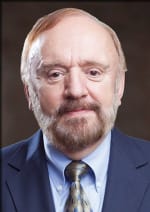 Fréchet was born in the Burgundy region of France, southeast of Paris. He received his diploma in chemical engineering from the Institute for Industrial Chemistry and Physics in Lyon in 1967. He then left for the United States, where he obtained his Ph.D. from the University of Syracuse in 1971. After teaching at the University of Ottawa and Cornell University, in 1997 he joined the faculty of the University of California, Berkeley, where he now occupies the Henry Rapoport Chair in Organic Chemistry. He is also head of the Materials Science Division of the Lawrence Berkeley National Laboratory, as well as Vice President for Research of the King Abdullah University of Science and Technology in Saudi Arabia. Fréchet has made important contributions to many fields of chemistry and materials science, including photolithography, molecular self-assembly, and nanotechnology, especially the convergent synthetic approach to creating dendritic polymers, or dendrimers.
Fréchet was born in the Burgundy region of France, southeast of Paris. He received his diploma in chemical engineering from the Institute for Industrial Chemistry and Physics in Lyon in 1967. He then left for the United States, where he obtained his Ph.D. from the University of Syracuse in 1971. After teaching at the University of Ottawa and Cornell University, in 1997 he joined the faculty of the University of California, Berkeley, where he now occupies the Henry Rapoport Chair in Organic Chemistry. He is also head of the Materials Science Division of the Lawrence Berkeley National Laboratory, as well as Vice President for Research of the King Abdullah University of Science and Technology in Saudi Arabia. Fréchet has made important contributions to many fields of chemistry and materials science, including photolithography, molecular self-assembly, and nanotechnology, especially the convergent synthetic approach to creating dendritic polymers, or dendrimers.
- Read more about Fréchet in our article: "The 50 Most Influential Scientist in the World Today."
- Web resource: Jean Fréchet's Home Page
11. Stanislas Leibler (b. 1957) NEW
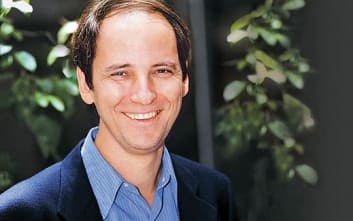 Leibler was born in Poland, received his Ph.D. (in physics) from the University of Paris, and worked for a number of years at the École Normale Supérieure, the Saclay Nuclear Research Centre, and the ESPCI (École Supérieure de Physique et de Chimie Industrielles), all in Paris. More recently, he has worked mainly in the U.S., at Princeton University, the Howard Hughes Medical Institute, the Weill Cornell Medical College, and the Sloan-Kettering Institute, among other posts. Today, he is the Gladys T. Perkin Professor at Rockefeller University, where he heads the Laboratory of Living Matter. In 2009, Leibler was appointed a member of the Institute for Advanced Study in Princeton, New Jersey. Leibler's work spans the fields of physics, biochemistry, and molecular biology, but he is best known for his work on biochemical and genetic network---and on the implications of the robustness and self-organizing properties of such networks for complex systems more generally. For this reason, his name is often mentioned in connection with the Nobel Prize in Chemistry, though he could just was well qualify for the prizes in physics and in physiology or medicine. In fact, Leibler's work on biochemical networks has been a prime contributor to the breaking down of traditional departmental boundaries and the organization of multidisciplinary teams like his own Laboratory of Living Matter, in the effort to understand how living systems work at a more fundamental, physical level. Leibler is also a pioneer of synthetic biology, which is the attempt to build synthetic networks to implement particular functions in model systems such as E. coli. In 2000, working together with Michael B. Elowitz, Leibler and his team produced a ground-breaking result in this new field by building a negative-feedback gene regulation system and monitoring its operation using fluorescent dye proteins.
Leibler was born in Poland, received his Ph.D. (in physics) from the University of Paris, and worked for a number of years at the École Normale Supérieure, the Saclay Nuclear Research Centre, and the ESPCI (École Supérieure de Physique et de Chimie Industrielles), all in Paris. More recently, he has worked mainly in the U.S., at Princeton University, the Howard Hughes Medical Institute, the Weill Cornell Medical College, and the Sloan-Kettering Institute, among other posts. Today, he is the Gladys T. Perkin Professor at Rockefeller University, where he heads the Laboratory of Living Matter. In 2009, Leibler was appointed a member of the Institute for Advanced Study in Princeton, New Jersey. Leibler's work spans the fields of physics, biochemistry, and molecular biology, but he is best known for his work on biochemical and genetic network---and on the implications of the robustness and self-organizing properties of such networks for complex systems more generally. For this reason, his name is often mentioned in connection with the Nobel Prize in Chemistry, though he could just was well qualify for the prizes in physics and in physiology or medicine. In fact, Leibler's work on biochemical networks has been a prime contributor to the breaking down of traditional departmental boundaries and the organization of multidisciplinary teams like his own Laboratory of Living Matter, in the effort to understand how living systems work at a more fundamental, physical level. Leibler is also a pioneer of synthetic biology, which is the attempt to build synthetic networks to implement particular functions in model systems such as E. coli. In 2000, working together with Michael B. Elowitz, Leibler and his team produced a ground-breaking result in this new field by building a negative-feedback gene regulation system and monitoring its operation using fluorescent dye proteins.
- Web resource: Stanislas Leibler's Home Page
12. Henry F. Schaefer, III (b. 1944)
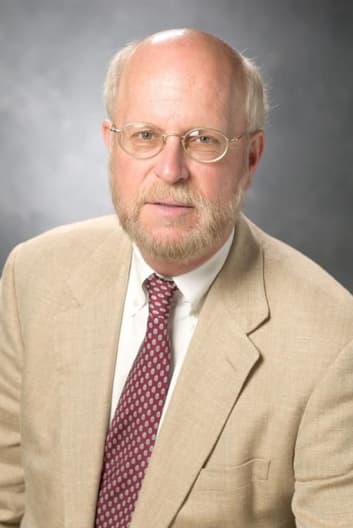 Schaefer was born in Grand Rapids, MI. He received his BS in chemical physics from MIT in 1966, and his PhD, also in chemical physics, from Stanford University in 1969. After teaching at the University of California, Berkeley, and the University of Texas at Austin, in 1987 he moved to the University of Georgia at Athens, where he is now the Graham Perdue Professor of Chemistry and Director of the Center for Computational Quantum Chemistry. He has also received numerous visiting, emeritus, and other academic appointments. Schaefer's work has centered on applying computational methods to problems in molecular quantum mechanics (quantum chemistry), a field he pioneered. The wide and varied body of work undertaken by his research group has employed highly accurate ab initio quantum-chemical computational techniques to throw light on the geometries, properties, and reactions of diverse chemical systems. Many of the group's papers have accurately predicted experimental results, and not a few have forced reinterpretations of the findings of other well-known investigators, such as, for example, the geometry of triplet methylene.
Schaefer was born in Grand Rapids, MI. He received his BS in chemical physics from MIT in 1966, and his PhD, also in chemical physics, from Stanford University in 1969. After teaching at the University of California, Berkeley, and the University of Texas at Austin, in 1987 he moved to the University of Georgia at Athens, where he is now the Graham Perdue Professor of Chemistry and Director of the Center for Computational Quantum Chemistry. He has also received numerous visiting, emeritus, and other academic appointments. Schaefer's work has centered on applying computational methods to problems in molecular quantum mechanics (quantum chemistry), a field he pioneered. The wide and varied body of work undertaken by his research group has employed highly accurate ab initio quantum-chemical computational techniques to throw light on the geometries, properties, and reactions of diverse chemical systems. Many of the group's papers have accurately predicted experimental results, and not a few have forced reinterpretations of the findings of other well-known investigators, such as, for example, the geometry of triplet methylene.
13. James M. Tour (b. 1959)
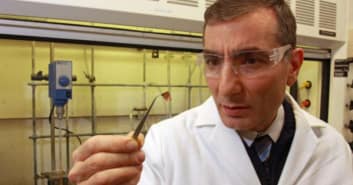 Tour was born in New York City. He was educated at Syracuse University and Purdue University, where he received his Ph.D. in organic chemistry in 1986, under Ei-ichi Negishi. After postdocs at Wisconsin and Stanford, Tour joined the faculty of the University of South Carolina. Since 1999, he has been the T.T. and W.F. Chao Professor of Chemistry at Rice University, in Houston, Texas, where he has a joint appointment with the Smalley Institute for Nanoscale Science and Technology. In 2004, he co-founded NanoComposites, Inc. He has also written on the problem of terrorists' obtaining chemical weapons and has done consulting work for the Commerce Department. The Tour group is best known for its work on molecular electronics and switching molecules. The numerous applications deriving from this work include carbon nanovectors for medical applications, green carbon research for environmentally friendly oil and gas extraction, graphene electronics and photovoltaics, chemical self-assembly, and synthesis of single-molecule nanomachines. Among the latter, Tour is most famous for creating the "nanocar," an H-shaped alkyne chassis with fullerene groups acting as wheels at the four corners. Powered by thermal energy, the nanocar is capable of rolling about freely on a metallic surface.
Tour was born in New York City. He was educated at Syracuse University and Purdue University, where he received his Ph.D. in organic chemistry in 1986, under Ei-ichi Negishi. After postdocs at Wisconsin and Stanford, Tour joined the faculty of the University of South Carolina. Since 1999, he has been the T.T. and W.F. Chao Professor of Chemistry at Rice University, in Houston, Texas, where he has a joint appointment with the Smalley Institute for Nanoscale Science and Technology. In 2004, he co-founded NanoComposites, Inc. He has also written on the problem of terrorists' obtaining chemical weapons and has done consulting work for the Commerce Department. The Tour group is best known for its work on molecular electronics and switching molecules. The numerous applications deriving from this work include carbon nanovectors for medical applications, green carbon research for environmentally friendly oil and gas extraction, graphene electronics and photovoltaics, chemical self-assembly, and synthesis of single-molecule nanomachines. Among the latter, Tour is most famous for creating the "nanocar," an H-shaped alkyne chassis with fullerene groups acting as wheels at the four corners. Powered by thermal energy, the nanocar is capable of rolling about freely on a metallic surface.
14. George M. Whitesides (b. 1939)
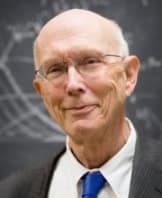 Whitesides was born Louisville, KY. He attended Phillips Andover Academy and Harvard College, before obtaining his Ph.D. in chemistry from Cal-Tech in 1964. He taught at MIT from 1963 until 1982, when he moved to chemistry department at Harvard University. Since 2004, he has been the Woodford L. and Ann A. Flowers University Professor there. Whitesides's laboratory has focused on the use of nuclear magnetic resonance spectroscopy in organic chemistry. His team has been highly productive in addressing a very wide swathe of research problems in materials science, biophysics, surface physics and cell-surface biochemistry, microfluids, emergence and complexity, molecular self-assembly, nanotechnology, the origin of life, and other fields. The best-known technological applications of his work have been in the areas of soft nanolithography, the chemical self-assembly of nanostructures, and the design of medical diagnostic "labs" on a chip.
Whitesides was born Louisville, KY. He attended Phillips Andover Academy and Harvard College, before obtaining his Ph.D. in chemistry from Cal-Tech in 1964. He taught at MIT from 1963 until 1982, when he moved to chemistry department at Harvard University. Since 2004, he has been the Woodford L. and Ann A. Flowers University Professor there. Whitesides's laboratory has focused on the use of nuclear magnetic resonance spectroscopy in organic chemistry. His team has been highly productive in addressing a very wide swathe of research problems in materials science, biophysics, surface physics and cell-surface biochemistry, microfluids, emergence and complexity, molecular self-assembly, nanotechnology, the origin of life, and other fields. The best-known technological applications of his work have been in the areas of soft nanolithography, the chemical self-assembly of nanostructures, and the design of medical diagnostic "labs" on a chip.
- Whitesides is also featured in our article: "The 50 Most Influential Scientist in the World Today."
- Web resource: George M. Whitesides's Home Page
NOBEL PRIZE FOR PHYSIOLOGY OR MEDICINE
15. David Baulcombe (b. 1952)
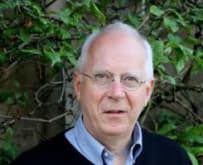 Baulcombe was born in Solihull, near Birmingham, in England. He received his BS degree in botany from the University of Leeds in 1973, and his PhD, also in botany, from the University of Edinburgh in 1977. After post-doctoral work in Canada and the U.S., Baulcombe returned to the U.K., where he joined the Plant Breeding Institute at Cambridge University as a research scientist in 1980. In 1988, he moved to the Sainsbury Laboratory at the University of East Anglia in Norwich. Since 2007, he has been Royal Society Research Professor at Cambridge. He was knighted in 2009. Baulcombe's field of research has been the role of viruses, RNA, and other factors in gene regulation, disease resistance, and gene silencing. In particular, his work on small interfering RNA (siRNA) was instrumental in opening up the entirely new, now-burgeoning field of study known as "epigenetics."
Baulcombe was born in Solihull, near Birmingham, in England. He received his BS degree in botany from the University of Leeds in 1973, and his PhD, also in botany, from the University of Edinburgh in 1977. After post-doctoral work in Canada and the U.S., Baulcombe returned to the U.K., where he joined the Plant Breeding Institute at Cambridge University as a research scientist in 1980. In 1988, he moved to the Sainsbury Laboratory at the University of East Anglia in Norwich. Since 2007, he has been Royal Society Research Professor at Cambridge. He was knighted in 2009. Baulcombe's field of research has been the role of viruses, RNA, and other factors in gene regulation, disease resistance, and gene silencing. In particular, his work on small interfering RNA (siRNA) was instrumental in opening up the entirely new, now-burgeoning field of study known as "epigenetics."
- Web resource: David Baulcombe's Home Page
16. Pierre Chambon (b. 1931)
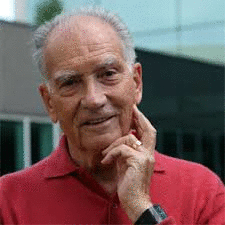 Chambon was born in Mulhouse, in southern Alsace. He received his Ph.D. from the University of Strasbourg, where he also taught from 1956 until 2002. In addition, he founded the Institute for Genetics and Cellular and Molecular Biology there. Since 2002, he has been an Honorary Professor at the Collège de France. Chambon is one of the first molecular biologists who used recombinant DNA technology, beginning in the 1970s, to investigate the structure of the eukaryotic genome and the ways in which gene regulation occurs in eukaryotes. His work elucidated the fundamental mechanisms of transcription in animal cells. He is also responsible for the discovery of the nuclear receptor superfamily. Finally, with Ronald M. Evans and others, Chambon discovered the nuclear hormone receptor for retinoic acid, a molecule which plays a crucial role in embryonic development and metabolism. This breakthrough revolutionized the fields of endocrinology and physiology, and opened up many new strategies for developing new drugs.
Chambon was born in Mulhouse, in southern Alsace. He received his Ph.D. from the University of Strasbourg, where he also taught from 1956 until 2002. In addition, he founded the Institute for Genetics and Cellular and Molecular Biology there. Since 2002, he has been an Honorary Professor at the Collège de France. Chambon is one of the first molecular biologists who used recombinant DNA technology, beginning in the 1970s, to investigate the structure of the eukaryotic genome and the ways in which gene regulation occurs in eukaryotes. His work elucidated the fundamental mechanisms of transcription in animal cells. He is also responsible for the discovery of the nuclear receptor superfamily. Finally, with Ronald M. Evans and others, Chambon discovered the nuclear hormone receptor for retinoic acid, a molecule which plays a crucial role in embryonic development and metabolism. This breakthrough revolutionized the fields of endocrinology and physiology, and opened up many new strategies for developing new drugs.
- Chambon is also featured in our article: "The 50 Most Influential Scientist in the World Today."
- Web resource: Pierre Chambon's Home Page
17. Ronald M. Evans (b. 1949)
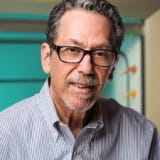 Evans was born in Los Angeles. He was educated at UCLA, where he received his Ph.D. in microbiology and immunology in 1974. He did postdoctoral work at Rockefeller University with James Darnell. Since 1978, He has been a faculty member at the Salk Institute in La Jolla, CA. In 1998, he was appointed the March of Dimes Chair in Molecular and Develoopmental Biology there. In addition, he is an Adjunct Professor at the University of California at San Diego, and a Howard Hughes Medical Institute investigator at the Salk Institute. Evans's research has focused on nuclear hormone signalling and metabolism. He is responsible for isolating the gene involved in the production of growth hormone, as well as its steroid and thyroid hormonal regulators and their receptor proteins. In all, he has discovered some 50 receptors that are part of this nuclear receptor superfamily. With Pierre Chambon and others, Evans discovered the important nuclear hormone receptor for retinoic acid (see above).
Evans was born in Los Angeles. He was educated at UCLA, where he received his Ph.D. in microbiology and immunology in 1974. He did postdoctoral work at Rockefeller University with James Darnell. Since 1978, He has been a faculty member at the Salk Institute in La Jolla, CA. In 1998, he was appointed the March of Dimes Chair in Molecular and Develoopmental Biology there. In addition, he is an Adjunct Professor at the University of California at San Diego, and a Howard Hughes Medical Institute investigator at the Salk Institute. Evans's research has focused on nuclear hormone signalling and metabolism. He is responsible for isolating the gene involved in the production of growth hormone, as well as its steroid and thyroid hormonal regulators and their receptor proteins. In all, he has discovered some 50 receptors that are part of this nuclear receptor superfamily. With Pierre Chambon and others, Evans discovered the important nuclear hormone receptor for retinoic acid (see above).
- Evans is also featured in our article: "The 50 Most Influential Scientist in the World Today."
- Web resource: Ronald M. Evans's Home Page
18. Albert Goldbeter
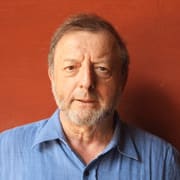 Goldbeter was educated at the Free University of Brussels, where he received his Ph.D. under the direction of Ilya Prigogine in 1973. He did postdoctoral work at the Weizmann Institute in Rehovot, Israel, and at the University of California, Berkeley, where he worked with Daniel Koshland. Today, he heads the Unit of Theoretical Chronobiology within the Faculty of Sciences at the Free University of Brussels. He has also authored the textbook, Biochemical Oscillations and Cellular Rhythms (Cambridge UP, 1996), as well as the popularization, La vie oscillatoire: Au coeur des rhythmes du vivant [Oscillatory Life: Inside the Rhythms of Living Things] (Odile Jacob, 2010). Godlbeter is a pioneer in mathematical and systems biology. His particular field of research is chronobiology, the study of the periodic (oscillatory or rhythmic) phenomena which are ubiquitous in organisms. He has developed mathematical models of circadian rhythms, the cell cycle, metabolic oscillations, the life cycle of the slime mold Dictyostelium discoideum, hormone secretion, and enzyme regulation through phosphorylation-dephosphorylation cycles, among other periodic phenomena in organisms.
Goldbeter was educated at the Free University of Brussels, where he received his Ph.D. under the direction of Ilya Prigogine in 1973. He did postdoctoral work at the Weizmann Institute in Rehovot, Israel, and at the University of California, Berkeley, where he worked with Daniel Koshland. Today, he heads the Unit of Theoretical Chronobiology within the Faculty of Sciences at the Free University of Brussels. He has also authored the textbook, Biochemical Oscillations and Cellular Rhythms (Cambridge UP, 1996), as well as the popularization, La vie oscillatoire: Au coeur des rhythmes du vivant [Oscillatory Life: Inside the Rhythms of Living Things] (Odile Jacob, 2010). Godlbeter is a pioneer in mathematical and systems biology. His particular field of research is chronobiology, the study of the periodic (oscillatory or rhythmic) phenomena which are ubiquitous in organisms. He has developed mathematical models of circadian rhythms, the cell cycle, metabolic oscillations, the life cycle of the slime mold Dictyostelium discoideum, hormone secretion, and enzyme regulation through phosphorylation-dephosphorylation cycles, among other periodic phenomena in organisms.
- Web resource: Albert Goldbeter's Home Page
19. Leroy Hood (b. 1938)
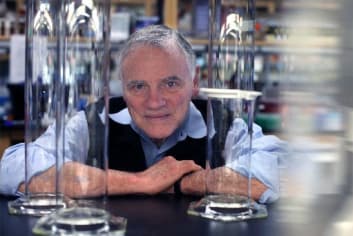 Hood was born in Missoula, MT. As an undergraduate at Cal-Tech, he studied with both Richard Feynman and Linus Pauling. After earning an MD from Johns Hopkins University, he took his Ph.D. in biochemistry in 1968 from Cal-Tech. He worked at Cal-Tech as a researcher and then as a professor of biology until 1992, when he moved to the University of Washington's Medical School, where he created the Department of Molecular Biotechnology. In 2000, he co-founded the Institute for Systems Biology in Seattle, where he is now Director, as well as leader of one of the principal research groups. He is also a founder of Amgen and several other biotechnology firms. Hood is best known for his work on the application of biotechnology to genomic research. While at Cal-Tech, he developed an automated DNA sequencer. This machine, together with ancillary devices also developed by his Cal-Tech team, form the technological foundation for contemporary molecular biology. Hood is also a pioneer in systems biology. His group is now developing system-level approaches to the investigation of molecular immunology, prion disease, induced pluripotent stem cells, cardiomyocyte differentiation, and neurodegenerative disease, among other things. In addition, it is doing path-breaking work on whole-genome sequencing.
Hood was born in Missoula, MT. As an undergraduate at Cal-Tech, he studied with both Richard Feynman and Linus Pauling. After earning an MD from Johns Hopkins University, he took his Ph.D. in biochemistry in 1968 from Cal-Tech. He worked at Cal-Tech as a researcher and then as a professor of biology until 1992, when he moved to the University of Washington's Medical School, where he created the Department of Molecular Biotechnology. In 2000, he co-founded the Institute for Systems Biology in Seattle, where he is now Director, as well as leader of one of the principal research groups. He is also a founder of Amgen and several other biotechnology firms. Hood is best known for his work on the application of biotechnology to genomic research. While at Cal-Tech, he developed an automated DNA sequencer. This machine, together with ancillary devices also developed by his Cal-Tech team, form the technological foundation for contemporary molecular biology. Hood is also a pioneer in systems biology. His group is now developing system-level approaches to the investigation of molecular immunology, prion disease, induced pluripotent stem cells, cardiomyocyte differentiation, and neurodegenerative disease, among other things. In addition, it is doing path-breaking work on whole-genome sequencing.
- Hood is also featured in our article: "The 50 Most Influential Scientist in the World Today."
- Web resource: Leroy Hood's Home Page
20. Jacques F.A.P. Miller (b. 1931)
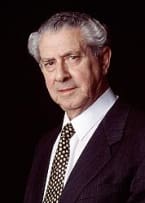 Miller was born Jacques Meunier in Nice, Fance. He was raised in China and Australia, where his family changed their name to Miller. He studied medicine at the University of Sydney and the University of London. While in London, he also worked at the Institute of Cancer Research. For his PhD, he decided to investigate the pathogenesis of lymphocytic leukemia in mice, expanding on the research of Ludvik Gross on mouse leukemia virus. In his landmark study, Miller showed that animals lacking a thymus at birth could not reject grafts of foreign tissues or resist infections, thus proving that the thymus---an organ previously thought to be without function---is in fact vital for the proper functioning of the immune system. In 1966, Miller returned to Australia to become a research group leader at the Walter and Eliza Hall Institute of Medical Research in Melbourne. It was there that Miller discovered the difference between T cells and B cells in mammalian lymphocytes, as well as their different roles in the immune response---knowledge which has proved crucial to the understanding and treatment of cancer, transplant rejection, autoimmune diseases such as AIDS, and many other disease processes.
Miller was born Jacques Meunier in Nice, Fance. He was raised in China and Australia, where his family changed their name to Miller. He studied medicine at the University of Sydney and the University of London. While in London, he also worked at the Institute of Cancer Research. For his PhD, he decided to investigate the pathogenesis of lymphocytic leukemia in mice, expanding on the research of Ludvik Gross on mouse leukemia virus. In his landmark study, Miller showed that animals lacking a thymus at birth could not reject grafts of foreign tissues or resist infections, thus proving that the thymus---an organ previously thought to be without function---is in fact vital for the proper functioning of the immune system. In 1966, Miller returned to Australia to become a research group leader at the Walter and Eliza Hall Institute of Medical Research in Melbourne. It was there that Miller discovered the difference between T cells and B cells in mammalian lymphocytes, as well as their different roles in the immune response---knowledge which has proved crucial to the understanding and treatment of cancer, transplant rejection, autoimmune diseases such as AIDS, and many other disease processes.
- Web resource: Jacques F.A.P. Miller's Home Page
21. James A. Shapiro (b. 1943)
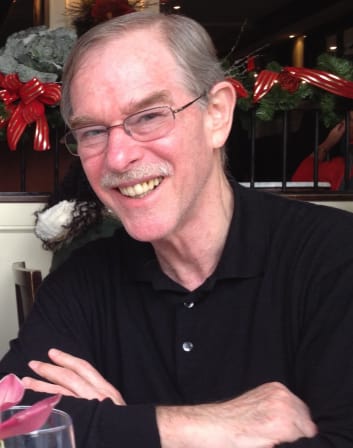 Shapiro was born in Chicago. He was educated at Harvard College and Cambridge University, where he received his Ph.D. in genetics in 1968. Before graduating, he studied for a year under François Jacob at the Institut Pasteur in Paris, and afterwards held positions at Harvard Medical School, the University of Havana, and Brandeis University, before settling in 1973 at the University of Chicago, where he is now a professor in the Department of Biochemistry and Molecular Biology. His primary field of research has been bacterial genetics. In 1969, Shapiro was a member of Jon Beckwith's team at Harvard which isolated lacZ in E. coli---the first individual gene to be isolated in any organism. In 1979, Shapiro proposed a model of replicative transposition---retrotransposon copying of a DNA sequence via an intermediate theta shape ("Shapiro intermediate")---to explain the phenomenon of gene mobility. Beginning in the 1980s, he did pioneering work on the cooperative behavior within colonies of social bacteria. More recently, he has focused on rethinking the entire evolutionary process in the light of non-random, adaptive "natural genetic engineering" in both bacteria and higher organisms. This path-breaking work is summarized in his book, Evolution: A View from the 21st Century (FT Press, 2012).
Shapiro was born in Chicago. He was educated at Harvard College and Cambridge University, where he received his Ph.D. in genetics in 1968. Before graduating, he studied for a year under François Jacob at the Institut Pasteur in Paris, and afterwards held positions at Harvard Medical School, the University of Havana, and Brandeis University, before settling in 1973 at the University of Chicago, where he is now a professor in the Department of Biochemistry and Molecular Biology. His primary field of research has been bacterial genetics. In 1969, Shapiro was a member of Jon Beckwith's team at Harvard which isolated lacZ in E. coli---the first individual gene to be isolated in any organism. In 1979, Shapiro proposed a model of replicative transposition---retrotransposon copying of a DNA sequence via an intermediate theta shape ("Shapiro intermediate")---to explain the phenomenon of gene mobility. Beginning in the 1980s, he did pioneering work on the cooperative behavior within colonies of social bacteria. More recently, he has focused on rethinking the entire evolutionary process in the light of non-random, adaptive "natural genetic engineering" in both bacteria and higher organisms. This path-breaking work is summarized in his book, Evolution: A View from the 21st Century (FT Press, 2012).
- Web resource: James A. Shapiro's Home Page
NOBEL PRIZE FOR LITERATURE
Kazuo Ishiguro won the Nobel Prize in Literature October 5th, 2017.
22. Aharon Appelfeld (b. 1932)
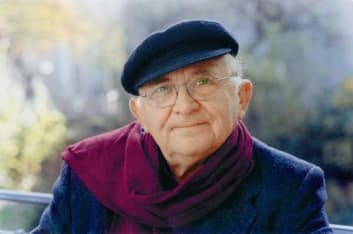 Appelfeld was born in the polyglot city of Czernowitz, in the Bukovina region of east-central Europe, which was part of the Kingdom of Romania at the time. Today, the city is officially known as Chernivtsi and is part of Ukraine. Appelfeld's family were German-speaking Jews, though he grew up speaking Yiddish, Ukrainian, and Russian, as well. In 1941, Romanian soldiers murdered his mother and deported his father to a Nazi concentration camp. The nine-year-old boy escaped capture and hid in the nearby forest for a time, before joining the Red Army as a cook. In 1946, he emigrated to Israel, where he was eventually reunited with his father. In Israel, Appelfeld quickly learned Hebrew (the language in which he writes) and made up for his lack of formal schooling. He graduated from the Hebrew University in Jerusalem, and today teaches literature at the Ben Gurion University of the Negev. Appelfeld made his mark with Badenheim 1939 (1978). In this work, a group of well-heeled residents of a spa dither while unnamed disaster closes in on them. The novel works both as a claustrophobic depiction of a dying world and as a fear-and-pity-inducing study of the human capacity for self-deception. Among Appelfeld's many other, equally accomplished novels, The Age of Wonders (1978), Tzili (1982), The Retreat (1984), To the Land of the Cattails (1986), and The Iron Tracks (1991) are worthy of special notice.
Appelfeld was born in the polyglot city of Czernowitz, in the Bukovina region of east-central Europe, which was part of the Kingdom of Romania at the time. Today, the city is officially known as Chernivtsi and is part of Ukraine. Appelfeld's family were German-speaking Jews, though he grew up speaking Yiddish, Ukrainian, and Russian, as well. In 1941, Romanian soldiers murdered his mother and deported his father to a Nazi concentration camp. The nine-year-old boy escaped capture and hid in the nearby forest for a time, before joining the Red Army as a cook. In 1946, he emigrated to Israel, where he was eventually reunited with his father. In Israel, Appelfeld quickly learned Hebrew (the language in which he writes) and made up for his lack of formal schooling. He graduated from the Hebrew University in Jerusalem, and today teaches literature at the Ben Gurion University of the Negev. Appelfeld made his mark with Badenheim 1939 (1978). In this work, a group of well-heeled residents of a spa dither while unnamed disaster closes in on them. The novel works both as a claustrophobic depiction of a dying world and as a fear-and-pity-inducing study of the human capacity for self-deception. Among Appelfeld's many other, equally accomplished novels, The Age of Wonders (1978), Tzili (1982), The Retreat (1984), To the Land of the Cattails (1986), and The Iron Tracks (1991) are worthy of special notice.
- Web resource: Aharon Appelfeld's Home Page
Note: Aharon Appelfeld died on January 4, 2018. Read more here.
23. Nuruddin Farah (b. 1945)
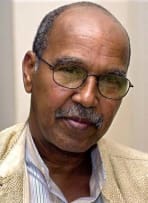 Farah was born in Baidoa, in south-central Somalia. The country, which had been placed under a United Nations mandate at the end of World War II, obtained its independence in 1960. Farah attended secondary school in Ogaden---the disputed, predominantly Somali-speaking region of eastern Ethiopa---from which he had to flee in 1963 when fighting broke out. Afterwards, he studied literature, philosophy, and sociology at Panjab University in Chandigarh, India. It was while living in India that he began writing in English, after some initial literary efforts in his native Somali. Farah's first novel, From a Crooked Rib, was published in London in 1970. It portrays the plight of a young Somali woman trapped in a brutal marriage. The novel's voice is so convincing that the publisher assumed the author must be a woman. While on a promotional tour in Europe for his second novel, A Naked Needle (1976), Farah learned that the government of Siad Barre intended to arrest him upon his return. As a result, Farah went into exile and did not see his homeland again for 20 years. Today, he makes his home in Cape Town, South Africa. Farah's reputation rests upon his numerous novels and his critical writings, but perhaps most of all upon what many consider to be his masterpiece, the Blood in the Sun trilogy---consisting of Maps (1986), Gifts (1993), and Secrets (1998)---which creates a virtuoso mosaic of first-, second-, and third-person voices to explore individual identities fractured by post-colonial ethnic conflict.
Farah was born in Baidoa, in south-central Somalia. The country, which had been placed under a United Nations mandate at the end of World War II, obtained its independence in 1960. Farah attended secondary school in Ogaden---the disputed, predominantly Somali-speaking region of eastern Ethiopa---from which he had to flee in 1963 when fighting broke out. Afterwards, he studied literature, philosophy, and sociology at Panjab University in Chandigarh, India. It was while living in India that he began writing in English, after some initial literary efforts in his native Somali. Farah's first novel, From a Crooked Rib, was published in London in 1970. It portrays the plight of a young Somali woman trapped in a brutal marriage. The novel's voice is so convincing that the publisher assumed the author must be a woman. While on a promotional tour in Europe for his second novel, A Naked Needle (1976), Farah learned that the government of Siad Barre intended to arrest him upon his return. As a result, Farah went into exile and did not see his homeland again for 20 years. Today, he makes his home in Cape Town, South Africa. Farah's reputation rests upon his numerous novels and his critical writings, but perhaps most of all upon what many consider to be his masterpiece, the Blood in the Sun trilogy---consisting of Maps (1986), Gifts (1993), and Secrets (1998)---which creates a virtuoso mosaic of first-, second-, and third-person voices to explore individual identities fractured by post-colonial ethnic conflict.
- Web resource: Nuruddin Farah's Home Page
24. Ismail Kadaré (b. 1936) NEW
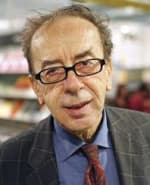 Kadaré was born in Gjirokastër in southern Albania, a well-preserved Ottoman town on the UNESCO World Heritage Site list. His father was a civil servant in the government of what was then the Kingdom of Albania. After World War II, strongman Enver Hoxha took over and established the Socialist People's Republic of Albania, an idiosyncratic totalitarian regime aligned not with Stalin's Soviet Union, but rather with Mao's China. Albania became all but hermetically sealed off from the outside world. These details of history are important for understanding Kadaré's literary methods and achievement. In his great early novels (for example, The General of the Dead Army [1963], Chronicle in Stone [1971], The Three-Arched Bridge [1978], The Palace of Dreams [1981]), he had little choice but to write obliquely. Working within a little-known but outstanding literary tradition that might be termed "Balkan poetic realism" (Stratis Myrivilis, Nikos Kazantzakis, Miloš Crnjanski, Ivo Andrić, Meša Selimović, Danilo Kiš), Kadaré's novels are often set in the past (especially in Ottoman times) and his narrative style favors integration of various lyrical elements---from nature description to stream of consciousness, folk tales, and dreams---with the main action. Before the fall of Communism in 1990, the results managed to pass Enver Hoxha's censors, yet lent themselves to an allegorical reading for the cognoscenti that clearly denounced the regime. In other words, Kadaré played a dangerous double-game for many years and got away with it, for two main reasons. First, the brilliance and literary skill he has always brought to bear on his work must have dazzled and mystified the government censors. Second, his gradually increasing international celebrity must have afforded him a measure of protection (his works have been translated into 22 languages; he has won a host of international literary prizes, including the Man Booker International Prize, the Prince of Asturias Award, and the Jerusalem Prize; and he has even been elected a member of France's Légion d'Honneur). But to dwell solely on their incomparable allegorical and satirical value as a critique of political tyranny in all its forms would be to give scant credit to Kadaré's many books (comprising novels, short story collections, and essays). Rather, it above all for his sheer literary talent that Ismail Kadaré deserves the Nobel Prize.
Kadaré was born in Gjirokastër in southern Albania, a well-preserved Ottoman town on the UNESCO World Heritage Site list. His father was a civil servant in the government of what was then the Kingdom of Albania. After World War II, strongman Enver Hoxha took over and established the Socialist People's Republic of Albania, an idiosyncratic totalitarian regime aligned not with Stalin's Soviet Union, but rather with Mao's China. Albania became all but hermetically sealed off from the outside world. These details of history are important for understanding Kadaré's literary methods and achievement. In his great early novels (for example, The General of the Dead Army [1963], Chronicle in Stone [1971], The Three-Arched Bridge [1978], The Palace of Dreams [1981]), he had little choice but to write obliquely. Working within a little-known but outstanding literary tradition that might be termed "Balkan poetic realism" (Stratis Myrivilis, Nikos Kazantzakis, Miloš Crnjanski, Ivo Andrić, Meša Selimović, Danilo Kiš), Kadaré's novels are often set in the past (especially in Ottoman times) and his narrative style favors integration of various lyrical elements---from nature description to stream of consciousness, folk tales, and dreams---with the main action. Before the fall of Communism in 1990, the results managed to pass Enver Hoxha's censors, yet lent themselves to an allegorical reading for the cognoscenti that clearly denounced the regime. In other words, Kadaré played a dangerous double-game for many years and got away with it, for two main reasons. First, the brilliance and literary skill he has always brought to bear on his work must have dazzled and mystified the government censors. Second, his gradually increasing international celebrity must have afforded him a measure of protection (his works have been translated into 22 languages; he has won a host of international literary prizes, including the Man Booker International Prize, the Prince of Asturias Award, and the Jerusalem Prize; and he has even been elected a member of France's Légion d'Honneur). But to dwell solely on their incomparable allegorical and satirical value as a critique of political tyranny in all its forms would be to give scant credit to Kadaré's many books (comprising novels, short story collections, and essays). Rather, it above all for his sheer literary talent that Ismail Kadaré deserves the Nobel Prize.
- Web resource: Ismail Kadaré's Britannica Bio Page
25. Milan Kundera (b. 1929)
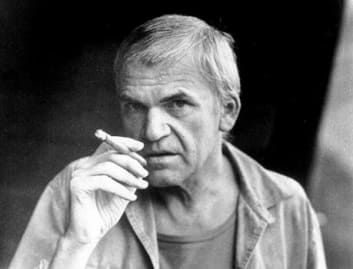 Kundera was born in Brno, in what was then Czechoslovakia and is now the Czech Republic. He studied literature at the Charles University in Prague, but switched to film studies. After graduation, he taught at the Institute for Advanced Cinematographic Studies. Kundera joined the Communist Party in 1948, but was expelled in 1950 for "anti-party activities"---an incident which formed the basis for his first novel, The Joke, published in Paris in 1967. He was readmitted to the party in 1956, and expelled again in 1970. In 1975, he went into exile in France. In 2008, he was accused of having worked for the Communist secret police---a charge he vehemently denies. Three remarkable early novels---The Joke, The Farewell Waltz (1972), and Life Is Elsewhere (1973), together with a book of short stories (Laughable Loves [1969])---established Kundera as a distinctive, tragicomic voice at the intersection of the existentialist novel and the theater of the absurd. However, it was The Book of Laughter and Forgetting (1978) and The Unbearable Lightness of Being (1984) that catapulted him onto the international stage. In these books, the author inserts his characters---with their typical obsessions concerning sex, death, and the meaning of life---into the high drama of recent Czech history. In addition to his 10 novels (the last four of which were composed directly in French), Kundera has written verse, plays, and several volumes of literary and philosophical reflection. Illuminating both his fiction and his essays is a vision of the novel as the best means of revealing the many-sided truth about the human predicament.
Kundera was born in Brno, in what was then Czechoslovakia and is now the Czech Republic. He studied literature at the Charles University in Prague, but switched to film studies. After graduation, he taught at the Institute for Advanced Cinematographic Studies. Kundera joined the Communist Party in 1948, but was expelled in 1950 for "anti-party activities"---an incident which formed the basis for his first novel, The Joke, published in Paris in 1967. He was readmitted to the party in 1956, and expelled again in 1970. In 1975, he went into exile in France. In 2008, he was accused of having worked for the Communist secret police---a charge he vehemently denies. Three remarkable early novels---The Joke, The Farewell Waltz (1972), and Life Is Elsewhere (1973), together with a book of short stories (Laughable Loves [1969])---established Kundera as a distinctive, tragicomic voice at the intersection of the existentialist novel and the theater of the absurd. However, it was The Book of Laughter and Forgetting (1978) and The Unbearable Lightness of Being (1984) that catapulted him onto the international stage. In these books, the author inserts his characters---with their typical obsessions concerning sex, death, and the meaning of life---into the high drama of recent Czech history. In addition to his 10 novels (the last four of which were composed directly in French), Kundera has written verse, plays, and several volumes of literary and philosophical reflection. Illuminating both his fiction and his essays is a vision of the novel as the best means of revealing the many-sided truth about the human predicament.
- Web resource: Milan Kundera's Home Page
26. Hilary Mantel (b. 1952)
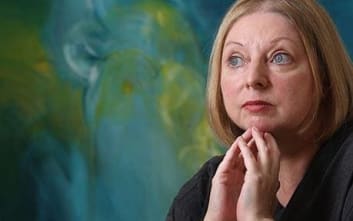 Mantel was born Hilary Thompson in Glossop, Derbyshire, in the English Midlands. Mantel is the name of her stepfather. She obtained her early education in Catholic schools, and received her bachelor's degree in jurisprudence from the University of Sheffield in 1973. She married a geologist, and spent several years in her twenties living abroad with him. She is the author of 11 novels, a collection of short stories, a memoir, and numerous essays. Her range is extremely broad, from her earliest domestic fiction, to academic satire, to the anthropological concerns of her novels set in Botswana and Saudi Arabia. One of her best books, Beyond Black (2005), is a comic meditation on the career of a contemporary suburban psychic. However, her greatest achievement is without doubt her historical fiction. In The Giant, O'Brien (1998), she paints the picture of various eighteenth-century English social strata, from scientific circles to circus side-shows, while at the same time movingly recounting the true-life story of her eponymous hero. Her masterpiece is her ongoing series of portraits of daily life and court intrigue in Tudor England, comprising, so far, Wolf Hall (2009) and Bring Up the Bodies (2012). In these books, Mantel has invented a brilliant new hybrid style of historical writing which not only brings the world of Henry VIII, Thomas Cromwell, and Anne Boleyn vividly to life before our eyes, but also confronts us with a mirror of the human soul and society in which we cannot fail to see ourselves reflected.
Mantel was born Hilary Thompson in Glossop, Derbyshire, in the English Midlands. Mantel is the name of her stepfather. She obtained her early education in Catholic schools, and received her bachelor's degree in jurisprudence from the University of Sheffield in 1973. She married a geologist, and spent several years in her twenties living abroad with him. She is the author of 11 novels, a collection of short stories, a memoir, and numerous essays. Her range is extremely broad, from her earliest domestic fiction, to academic satire, to the anthropological concerns of her novels set in Botswana and Saudi Arabia. One of her best books, Beyond Black (2005), is a comic meditation on the career of a contemporary suburban psychic. However, her greatest achievement is without doubt her historical fiction. In The Giant, O'Brien (1998), she paints the picture of various eighteenth-century English social strata, from scientific circles to circus side-shows, while at the same time movingly recounting the true-life story of her eponymous hero. Her masterpiece is her ongoing series of portraits of daily life and court intrigue in Tudor England, comprising, so far, Wolf Hall (2009) and Bring Up the Bodies (2012). In these books, Mantel has invented a brilliant new hybrid style of historical writing which not only brings the world of Henry VIII, Thomas Cromwell, and Anne Boleyn vividly to life before our eyes, but also confronts us with a mirror of the human soul and society in which we cannot fail to see ourselves reflected.
Note added in 2017: Mantel is now saying that we should not expect the publication of the final installment in her trilogy on the life of Thomas Cromwell, The Mirror and the Light, until 2019.
- Web resource: Hilary Mantel's Home Page
27. Javier Marías (b. 1951)
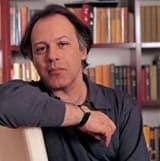 Marías was born in Madrid, Spain. Son of the noted philosopher Julián Marías, Javier was raised partly in the United States. However, the boy returned to Madrid for his secondary education, and studied literature at the Universidad Complutense in Madrid. After graduating, he worked as a translator, conveying many classic works of English literature into Spanish, and also taught Spanish literature at Oxford University for two years---an experience that has figured prominently in his subsequent fiction. After several early novels won for him a growing following in Spain, Marías came to international attention in 1989 with All Souls, in which his characteristic themes of nostalgia, fractured identity, the indeterminacy of meaning, and the fleetingness of existence found highly original expression through an amalgam of stream of consciousness with genre literature. In subsequent works such as A Heart So White (1992), Tomorrow in the Battle Think on Me (1994), and When I Was Mortal (1996), these themes and rhetorical devices were increasingly wedded to an ironic playfulness, on the one hand, and a linguistic luxuriance, on the other. All of these developments were brought to a high degree of polish in Marías's masterpiece, the Your Face Tomorrow trilogy, consisting of Fever and Spear (2002,) Dance and Dream (2004), and Poison, Shadow, and Farewell (2007). Marías manages to resolve the tension between the modernist and the postmodern elements in his work by employing verbal artifice to render the perception of reality ineffably poignant.
Marías was born in Madrid, Spain. Son of the noted philosopher Julián Marías, Javier was raised partly in the United States. However, the boy returned to Madrid for his secondary education, and studied literature at the Universidad Complutense in Madrid. After graduating, he worked as a translator, conveying many classic works of English literature into Spanish, and also taught Spanish literature at Oxford University for two years---an experience that has figured prominently in his subsequent fiction. After several early novels won for him a growing following in Spain, Marías came to international attention in 1989 with All Souls, in which his characteristic themes of nostalgia, fractured identity, the indeterminacy of meaning, and the fleetingness of existence found highly original expression through an amalgam of stream of consciousness with genre literature. In subsequent works such as A Heart So White (1992), Tomorrow in the Battle Think on Me (1994), and When I Was Mortal (1996), these themes and rhetorical devices were increasingly wedded to an ironic playfulness, on the one hand, and a linguistic luxuriance, on the other. All of these developments were brought to a high degree of polish in Marías's masterpiece, the Your Face Tomorrow trilogy, consisting of Fever and Spear (2002,) Dance and Dream (2004), and Poison, Shadow, and Farewell (2007). Marías manages to resolve the tension between the modernist and the postmodern elements in his work by employing verbal artifice to render the perception of reality ineffably poignant.
- Web resource: Javier Marías's Home Page
28. Péter Nádas (b. 1942)
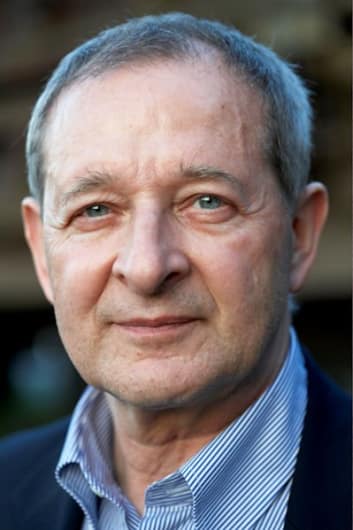 Nádas was born in Budapest, Hungary. His mother died when he was 13, and his father, a high-ranking government official, committed suicide in 1958, two years after the Soviet invasion. Nádas studied journalism and photography at university, and worked for a time as a journalist for a Budapest magazine. After meeting with literary success, he moved to a small village in western Hungary, where he has continued to write freelance political commentary, as well as novels, short stories, plays, criticism, and personal essays. He is a frequent visitor to Germany, where his work is widely esteemed. Among his many novels (only a few of which have been translated into English), the most important are The End of a Family Story (1977), Love (1979), A Book of Memories (1986), and Parallel Stories (2005). It is upon the last two of these that Nádas's reputation principally rests. These immense romans fleuve weave multiple perspectives in and around each other and historical events. Consciousness itself is Nádas's main theme---both the minutiae of our moment-to-moment perception, and the way in which the self is constructed out of the myriad strands of unreliable memory. Nádas is perhaps the purest late-twentieth-century example of the great tradition leading from Henry James and Marcel Proust, through Thomas Mann and Robert Musil, to Hermann Broch and Albert Cohen---though distinguished by a franker attitude towards sex and by the theme of the moral compromises involved in living under a totalitarian regime.
Nádas was born in Budapest, Hungary. His mother died when he was 13, and his father, a high-ranking government official, committed suicide in 1958, two years after the Soviet invasion. Nádas studied journalism and photography at university, and worked for a time as a journalist for a Budapest magazine. After meeting with literary success, he moved to a small village in western Hungary, where he has continued to write freelance political commentary, as well as novels, short stories, plays, criticism, and personal essays. He is a frequent visitor to Germany, where his work is widely esteemed. Among his many novels (only a few of which have been translated into English), the most important are The End of a Family Story (1977), Love (1979), A Book of Memories (1986), and Parallel Stories (2005). It is upon the last two of these that Nádas's reputation principally rests. These immense romans fleuve weave multiple perspectives in and around each other and historical events. Consciousness itself is Nádas's main theme---both the minutiae of our moment-to-moment perception, and the way in which the self is constructed out of the myriad strands of unreliable memory. Nádas is perhaps the purest late-twentieth-century example of the great tradition leading from Henry James and Marcel Proust, through Thomas Mann and Robert Musil, to Hermann Broch and Albert Cohen---though distinguished by a franker attitude towards sex and by the theme of the moral compromises involved in living under a totalitarian regime.
- Web resource: Péter Nádas's Britannica Bio Page
29. Vikram Seth (b. 1952)
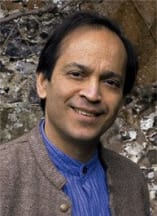 Seth was born in Calcutta (now Kolkata), India, into a family of Punjabi immigrants. He attended both the prestigious Doon School in India and the elite Tonbridge School in England. He took his undergraduate degree from Oxford University, then did graduate work in economics at Stanford University. He has also studied creative writing at Stanford and classical Chinese poetry at Nanjing University, in China. Seth speaks some half-dozen languages, but writes only in English. His first important work was The Golden Gate (1986), a novel in verse consisting of 690 Pushkin sonnets that update Eugene Onegin to 1980s California, with a small cast of upper-middle-class Americans involved in various amatory permutations. The book is an amusing---finally, moving---blend of satire and reflection, in high and low diction, refracted through scintillating rhymes and harnessed to propulsive rhythms. Seth's next novel, A Suitable Boy (1993), was an enormous, Dickensian narrative (this time in prose) populated by a huge cast of wryly observed characters set against the backdrop of a post-independence India rendered with tactile precision. Seth has also written another novel, An Equal Music (1999), six volumes of poetry, a travel book, a children's book, a memoir, translations of Chinese verse, and several librettos. His latest novel, A Suitable Girl, is currently due to be published in 2018.
Seth was born in Calcutta (now Kolkata), India, into a family of Punjabi immigrants. He attended both the prestigious Doon School in India and the elite Tonbridge School in England. He took his undergraduate degree from Oxford University, then did graduate work in economics at Stanford University. He has also studied creative writing at Stanford and classical Chinese poetry at Nanjing University, in China. Seth speaks some half-dozen languages, but writes only in English. His first important work was The Golden Gate (1986), a novel in verse consisting of 690 Pushkin sonnets that update Eugene Onegin to 1980s California, with a small cast of upper-middle-class Americans involved in various amatory permutations. The book is an amusing---finally, moving---blend of satire and reflection, in high and low diction, refracted through scintillating rhymes and harnessed to propulsive rhythms. Seth's next novel, A Suitable Boy (1993), was an enormous, Dickensian narrative (this time in prose) populated by a huge cast of wryly observed characters set against the backdrop of a post-independence India rendered with tactile precision. Seth has also written another novel, An Equal Music (1999), six volumes of poetry, a travel book, a children's book, a memoir, translations of Chinese verse, and several librettos. His latest novel, A Suitable Girl, is currently due to be published in 2018.
- Web resource: Vikram Seth's Britannica Bio Page
NOBEL PRIZE FOR PEACE
30. Hawa Abdi (b. 1947)
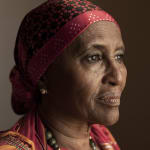 Abdi was born in Mogadishu, Somalia. Her mother died in childbirth when Abdi was 12---an event which made her determined to become a doctor. She studied medicine in Kiev, Ukraine (then part of the Soviet Union), specializing in gynecology. She received her M.D. in 1971. She returned home that same year, and completed a further law degree at Somali National University, where she also taught medicine for a time. In 1983, Dr. Abdi opened her own clinic, specially dedicated to treating women's diseases, on her family's ancestral land, some 25 km west of Mogadishu, on the banks of the Shabelle River. She now runs the clinic with her two adult daughters, both of whom are also physicians. After Somalia began its descent into anarchy in 1992, Dr. Abdi (better known locally as "Mama Hawa") began to house refugees on her property. She then set up the Dr. Hawa Abdi Foundation (DHAF), one of the first NGOs to operate inside her war-torn country. The DHAF now runs the camp---known colloquially as "Hawa Abdi Village"---which has grown enormously and today provides food, shelter, education, and medical services to some 90,000 refugees. Dr. Abdi's "village" has been described as "an island of hope in a sea of violence." In 2017, she received a Doctor of Law degree honoris causa from Harvard University.
Abdi was born in Mogadishu, Somalia. Her mother died in childbirth when Abdi was 12---an event which made her determined to become a doctor. She studied medicine in Kiev, Ukraine (then part of the Soviet Union), specializing in gynecology. She received her M.D. in 1971. She returned home that same year, and completed a further law degree at Somali National University, where she also taught medicine for a time. In 1983, Dr. Abdi opened her own clinic, specially dedicated to treating women's diseases, on her family's ancestral land, some 25 km west of Mogadishu, on the banks of the Shabelle River. She now runs the clinic with her two adult daughters, both of whom are also physicians. After Somalia began its descent into anarchy in 1992, Dr. Abdi (better known locally as "Mama Hawa") began to house refugees on her property. She then set up the Dr. Hawa Abdi Foundation (DHAF), one of the first NGOs to operate inside her war-torn country. The DHAF now runs the camp---known colloquially as "Hawa Abdi Village"---which has grown enormously and today provides food, shelter, education, and medical services to some 90,000 refugees. Dr. Abdi's "village" has been described as "an island of hope in a sea of violence." In 2017, she received a Doctor of Law degree honoris causa from Harvard University.
- Web resource: Hawa Abdi's Home Page
31. José Antonio Abreu (b. 1939)
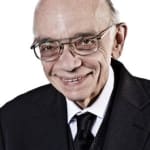 Abreu was born in Valera, Venezuela. He attended Andrés Bello Catholic University (UCAB), from which he received his PhD. in economics in 1961. He has taught law and economics at UCAB and Simón Bolívar University, and has also served the Venezuelan government as a member of the Chamber of Deputies and as Minister of Culture. Growing up, Abreu studied piano, organ, harpsichord, and composition with a number of talented teachers. In 1975, he initiated the Foundation for the National Network of Youth and Children's Orchestras of Venezuela---now officially changed to the Simón Bolívar Musical Foundation---but in any case universally known as "El Sistema" [The System]. Funded by the Venezuelan state, El Sistema enrolls more than 300,000 young people in some 125 after-school and weekend programs, including 31 symphony orchestras, located throughout the country. These programs provide free musical instruction, including instruments, to mostly poor children and teenagers. Altogether, more than two million youth have passed through El Sistema, which provides a nurturing environment with an emphasis on self-discipline and the spiritual and character-building qualities of instruction in both classical music and the traditional music of Venezuela. Recently, similar programs have begun to spring up in a number of other countries. According to El Sistema USA, there are now some 50 such programs active in the United States. In 2009, the Swedish Academy of Music awarded Abreu its Polar Music Prize. The following year, he won the prestigious Erasmus Prize awarded by the Netherlands' Erasmus Prize Foundation to leading international scholars and artists.
Abreu was born in Valera, Venezuela. He attended Andrés Bello Catholic University (UCAB), from which he received his PhD. in economics in 1961. He has taught law and economics at UCAB and Simón Bolívar University, and has also served the Venezuelan government as a member of the Chamber of Deputies and as Minister of Culture. Growing up, Abreu studied piano, organ, harpsichord, and composition with a number of talented teachers. In 1975, he initiated the Foundation for the National Network of Youth and Children's Orchestras of Venezuela---now officially changed to the Simón Bolívar Musical Foundation---but in any case universally known as "El Sistema" [The System]. Funded by the Venezuelan state, El Sistema enrolls more than 300,000 young people in some 125 after-school and weekend programs, including 31 symphony orchestras, located throughout the country. These programs provide free musical instruction, including instruments, to mostly poor children and teenagers. Altogether, more than two million youth have passed through El Sistema, which provides a nurturing environment with an emphasis on self-discipline and the spiritual and character-building qualities of instruction in both classical music and the traditional music of Venezuela. Recently, similar programs have begun to spring up in a number of other countries. According to El Sistema USA, there are now some 50 such programs active in the United States. In 2009, the Swedish Academy of Music awarded Abreu its Polar Music Prize. The following year, he won the prestigious Erasmus Prize awarded by the Netherlands' Erasmus Prize Foundation to leading international scholars and artists.
- Web resource: José Antonio Abreu's El Sistema Home Page
32. Geoffrey Canada (b. 1952)
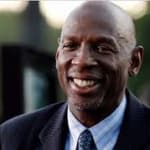 Canada was born in the South Bronx, in New York City. His parents divorced when Geoffrey was four, and he had little to do with his father growing up. His mother, a social worker, raised her four children alone, in difficult financial circumstances. Canada has said that he was raised among "abandoned houses, crime, violence, and an all-encompassing sense of chaos and disorder." When he was a teenager, his mother sent him to live with relatives on Long Island, where he attended high school. Subsequently, he obtained his bachelor's degree in psychology and sociology from Bowdoin College, in Maine, and a master's degree in education from Harvard University. He has published two books recounting his life and his educational philosophy. In 1990, with corporate support, Canada began a project to transform a single block in central Harlem in a comprehensive way by giving "poor children the things middle-class children take for granted---high-quality schooling, a safe neighborhood, parents who read to them, and good medical care." Dubbed the Harlem Children's Zone (HCZ), Canada's project has now expanded to take in a nearly 100-block area, serving some 10,000 schoolchildren. HCZ helps provides services for children attending its own Promise Academy Charter School, as well as for those attending neighborhood public schools. Ninety percent of the children who participate regularly in HCZ's wide range of afterschool programs go on to college. Efforts are under way to replicate HCZ in urban areas across America.
Canada was born in the South Bronx, in New York City. His parents divorced when Geoffrey was four, and he had little to do with his father growing up. His mother, a social worker, raised her four children alone, in difficult financial circumstances. Canada has said that he was raised among "abandoned houses, crime, violence, and an all-encompassing sense of chaos and disorder." When he was a teenager, his mother sent him to live with relatives on Long Island, where he attended high school. Subsequently, he obtained his bachelor's degree in psychology and sociology from Bowdoin College, in Maine, and a master's degree in education from Harvard University. He has published two books recounting his life and his educational philosophy. In 1990, with corporate support, Canada began a project to transform a single block in central Harlem in a comprehensive way by giving "poor children the things middle-class children take for granted---high-quality schooling, a safe neighborhood, parents who read to them, and good medical care." Dubbed the Harlem Children's Zone (HCZ), Canada's project has now expanded to take in a nearly 100-block area, serving some 10,000 schoolchildren. HCZ helps provides services for children attending its own Promise Academy Charter School, as well as for those attending neighborhood public schools. Ninety percent of the children who participate regularly in HCZ's wide range of afterschool programs go on to college. Efforts are under way to replicate HCZ in urban areas across America.
- Geoffrey Canada is also featured in our article: "10 Awesome TED Talks on Education"
- Web resource: Geoffrey Canada's Harlem Children's Zone Page
33. Svetlana Gannushkina (b. 1942)
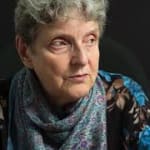 Gannushkina was born in the Soviet Union. She is a mathematician by training, and worked for many years teaching mathematics at the university level in Moscow. During the break-up of the Soviet bloc, and eventually the USSR itself, during the late 1980s and early 1990s, she became involved in human-rights and relief work. Her first major undertaking was to help arrange relief for refugees during the fighting in Nagorno-Karabakh, an ethnic Armenian--majority enclave within Azerbaijan. In 1990, Gannushkina founded Citizen's Assistance, an NGO devoted to the protection of human rights and the integration of internally displaced people, migrants, and refugees into Russian society. She also traveled to Chechnya during the armed conflicts there in the 1990s, in order to help provide humanitarian aid to refugees and other civilians. In Moscow, where she has tirelessly lobbied the government on behalf of migrants, refugees, and those persecuted on account of their ethnicity or wrongly accused of crimes, she has founded a network of centers where they may seek legal advice and where their children may study Russian and other subjects. She is also a co-founder of Memorial, an organization dedicated to documenting the crimes committed by the Communist regime of the former Soviet Union against its own citizens, as well as helping to rehabilitate survivors and monitor ongoing human rights violations in Russia.
Gannushkina was born in the Soviet Union. She is a mathematician by training, and worked for many years teaching mathematics at the university level in Moscow. During the break-up of the Soviet bloc, and eventually the USSR itself, during the late 1980s and early 1990s, she became involved in human-rights and relief work. Her first major undertaking was to help arrange relief for refugees during the fighting in Nagorno-Karabakh, an ethnic Armenian--majority enclave within Azerbaijan. In 1990, Gannushkina founded Citizen's Assistance, an NGO devoted to the protection of human rights and the integration of internally displaced people, migrants, and refugees into Russian society. She also traveled to Chechnya during the armed conflicts there in the 1990s, in order to help provide humanitarian aid to refugees and other civilians. In Moscow, where she has tirelessly lobbied the government on behalf of migrants, refugees, and those persecuted on account of their ethnicity or wrongly accused of crimes, she has founded a network of centers where they may seek legal advice and where their children may study Russian and other subjects. She is also a co-founder of Memorial, an organization dedicated to documenting the crimes committed by the Communist regime of the former Soviet Union against its own citizens, as well as helping to rehabilitate survivors and monitor ongoing human rights violations in Russia.
34. Maggie Gobran
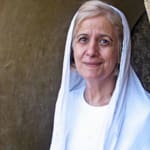 Gobran was born in Cairo, into an upper-middle-class Coptic Orthodox Christian family. Growing up, she was sheltered from the desperate poverty around her. For many years she worked as a successful business professional for a marketing firm. Later, she taught computer science at Cairo University. She first experienced "Garbage City"---a veritable town inhabited by Cairo's poorest residents, who make their living and their homes in that city's vast garbage dump---through an annual Easter outreach by her church, aimed at distributing food and clothing to families. Gobran---now known to all as "Mama Maggie"---was appalled by the squalor she witnessed. She was especially haunted by the despair of the children, as well as their "hunger for love, acceptance, and value in society." Feeling that God had "pierced her spirit," in 1987 she gave up her academic career and founded Stephen's Children, an organization devoted to "loving the unloved" by helping to improve the lives of children and families---especially those of socially marginalized and physically threatened Coptic Christians---who live in Cairo's slums and impoverished villages throughout rural Upper Egypt. The Stephen's Children ministry has grown to number about 1500 paid workers and volunteers, a fifth of whom grew up in Garbage City themselves. They now serve around 20,000 families, or altogether some 150,000 people.
Gobran was born in Cairo, into an upper-middle-class Coptic Orthodox Christian family. Growing up, she was sheltered from the desperate poverty around her. For many years she worked as a successful business professional for a marketing firm. Later, she taught computer science at Cairo University. She first experienced "Garbage City"---a veritable town inhabited by Cairo's poorest residents, who make their living and their homes in that city's vast garbage dump---through an annual Easter outreach by her church, aimed at distributing food and clothing to families. Gobran---now known to all as "Mama Maggie"---was appalled by the squalor she witnessed. She was especially haunted by the despair of the children, as well as their "hunger for love, acceptance, and value in society." Feeling that God had "pierced her spirit," in 1987 she gave up her academic career and founded Stephen's Children, an organization devoted to "loving the unloved" by helping to improve the lives of children and families---especially those of socially marginalized and physically threatened Coptic Christians---who live in Cairo's slums and impoverished villages throughout rural Upper Egypt. The Stephen's Children ministry has grown to number about 1500 paid workers and volunteers, a fifth of whom grew up in Garbage City themselves. They now serve around 20,000 families, or altogether some 150,000 people.
- Web resource: Maggie Gobran's Stephen's Children's Home Page
35. Nataša Kandić (b. 1946)
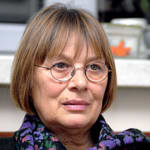 Kandić was born in Kragujevac, in what was then Yugoslavia and is now Serbia. She is a sociologist by training. During Yugoslavia's break-up and descent into bloodshed in 1992, she founded the Humanitarian Law Center (HLC) in Belgrade, where she works as the Executive Director. The HLC has been praised for its systematic and impartial investigation into human-rights abuses during the Yugoslav civil wars. Its research was integral to the war crimes prosecutions by the International Criminal Court in The Hague, notably by providing the "smoking gun" video linking Serbian military forces to the massacre of more than 7,000 Bosnian Muslim prisoners in and around Srebrenica, Bosnia, in 1995. During the 1999 conflict in Kosovo, Kandić was one of the few Serbs to collaborate with ethnic Albanian human-rights activists to provide accurate reporting about human-rights abuses by the Serbian military there. She has been the object of numerous law suits and death threats aimed at discrediting or stopping her work and that of the HLC.
Kandić was born in Kragujevac, in what was then Yugoslavia and is now Serbia. She is a sociologist by training. During Yugoslavia's break-up and descent into bloodshed in 1992, she founded the Humanitarian Law Center (HLC) in Belgrade, where she works as the Executive Director. The HLC has been praised for its systematic and impartial investigation into human-rights abuses during the Yugoslav civil wars. Its research was integral to the war crimes prosecutions by the International Criminal Court in The Hague, notably by providing the "smoking gun" video linking Serbian military forces to the massacre of more than 7,000 Bosnian Muslim prisoners in and around Srebrenica, Bosnia, in 1995. During the 1999 conflict in Kosovo, Kandić was one of the few Serbs to collaborate with ethnic Albanian human-rights activists to provide accurate reporting about human-rights abuses by the Serbian military there. She has been the object of numerous law suits and death threats aimed at discrediting or stopping her work and that of the HLC.
- Web resource: Nataša Kandić's Humanitarian Law Center's Home Page
36. Ragıp Zarakolu (b. 1948)
 Zarakolu was born on an island in the Sea of Marmara, near Istanbul, Turkey. In 1968, he began working as a journalist, writing for magazines that focused on human-rights and justice issues. During the early 1970s, he was jailed on several occasions by government authorities, spending altogether some three years in prison. In 1977, Zarakolu and his wife founded the Belge Publishing House. Once again, he was jailed (along with his wife this time), Belge's publications were confiscated, and heavy fines were imposed. In 1979, he co-founded a daily newspaper, Demokrat, which was also soon shut down by the government. Undeterred, in 1980 he co-founded the Turkish Human Rights Association. Eventually, Belge was able to resume operation, and Zarakolu began publishing many controversial works of history and reportage, some written by former political prisoners. Among the subjects dealt with were the condition of Turkey's religious and ethnic minorities, including Greeks, Armenians, Jews, and Kurds. In 1995, Belge's offices were firebombed, and during the 2000s new charges have been brought against Zarakolu several times for books on the Armenian genocide, among others. In October of 2011, he was arrested yet again. He was released from prison in April of 2012, but still faces charges that could lead to up to 15 years' imprisonment.
Zarakolu was born on an island in the Sea of Marmara, near Istanbul, Turkey. In 1968, he began working as a journalist, writing for magazines that focused on human-rights and justice issues. During the early 1970s, he was jailed on several occasions by government authorities, spending altogether some three years in prison. In 1977, Zarakolu and his wife founded the Belge Publishing House. Once again, he was jailed (along with his wife this time), Belge's publications were confiscated, and heavy fines were imposed. In 1979, he co-founded a daily newspaper, Demokrat, which was also soon shut down by the government. Undeterred, in 1980 he co-founded the Turkish Human Rights Association. Eventually, Belge was able to resume operation, and Zarakolu began publishing many controversial works of history and reportage, some written by former political prisoners. Among the subjects dealt with were the condition of Turkey's religious and ethnic minorities, including Greeks, Armenians, Jews, and Kurds. In 1995, Belge's offices were firebombed, and during the 2000s new charges have been brought against Zarakolu several times for books on the Armenian genocide, among others. In October of 2011, he was arrested yet again. He was released from prison in April of 2012, but still faces charges that could lead to up to 15 years' imprisonment.
- Web resource: Ragıp Zarakolu's Human Rights Association's Home Page
NOBEL MEMORIAL PRIZE IN ECONOMIC SCIENCES
37. Daron Acemoğlu (b. 1967)
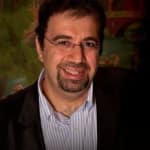 Acemoğlu was born in Istanbul, Turkey. He was educated in Istanbul, at the University of York, in the UK, and at the London School of Economics, from which he received his Ph.D. in 1992. In 1993, he joined the faculty of MIT, in Cambridge, MA, where he is now the Charles P. Kindleberger Professor of Applied Economics. He is also affiliated with the National Bureau of Economic Research (NBER), as well as several other research centers and think tanks. The main focus of Acemoğlu's research is in development economics, as well as in economic growth, human capital and training, income inequality, and labor economics. His most recent work shows how differences in political institutions---such as true democracy and an independent and impartial judiciary---play a crucial role in economic development, explaining most of the difference in development between various countries around the world. Acemoğlu has presented these results in Why Nations Fail: The Origins of Power, Prosperity, and Poverty (with James Robinson) (Crown Business, 2012).
Acemoğlu was born in Istanbul, Turkey. He was educated in Istanbul, at the University of York, in the UK, and at the London School of Economics, from which he received his Ph.D. in 1992. In 1993, he joined the faculty of MIT, in Cambridge, MA, where he is now the Charles P. Kindleberger Professor of Applied Economics. He is also affiliated with the National Bureau of Economic Research (NBER), as well as several other research centers and think tanks. The main focus of Acemoğlu's research is in development economics, as well as in economic growth, human capital and training, income inequality, and labor economics. His most recent work shows how differences in political institutions---such as true democracy and an independent and impartial judiciary---play a crucial role in economic development, explaining most of the difference in development between various countries around the world. Acemoğlu has presented these results in Why Nations Fail: The Origins of Power, Prosperity, and Poverty (with James Robinson) (Crown Business, 2012).
- Web resource: Daron Acemoğlu's Home Page
38. Susan C. Athey (b. 1970)
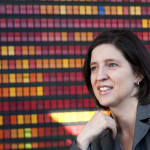 Athey was born in Boston, MA, and grew up in Rockville, MD. She has stated that attending a cattle auction with her grandfather when she was a young girl stimulated her interest in economics. She attended Duke University at the age of 16, where she pursued a triple major in economics, mathematics, and computer science. She completed her Ph.D. from the Stanford Graduate School of Business at the age of 24. She then taught at MIT for six years before returning to Stanford for five years. Since 2006, she has held the title of Professor of Economics at Harvard University. She is also a research associate with NBER, chief economist for Microsoft Corporation, member of the National Science Foundation's economics panel, and has served as associate editor for several leading economics journals. Athey was the first woman to win the prestigious John Bates Clark medal, in 2007. Her research has focused on the impact of uncertainty on the behavior of economic agents, especially investors, and on marketplace optimization. Athey's analysis of the susceptibility of open-bid auctions to corruption has led to the widespread adoption of sealed bids.
Athey was born in Boston, MA, and grew up in Rockville, MD. She has stated that attending a cattle auction with her grandfather when she was a young girl stimulated her interest in economics. She attended Duke University at the age of 16, where she pursued a triple major in economics, mathematics, and computer science. She completed her Ph.D. from the Stanford Graduate School of Business at the age of 24. She then taught at MIT for six years before returning to Stanford for five years. Since 2006, she has held the title of Professor of Economics at Harvard University. She is also a research associate with NBER, chief economist for Microsoft Corporation, member of the National Science Foundation's economics panel, and has served as associate editor for several leading economics journals. Athey was the first woman to win the prestigious John Bates Clark medal, in 2007. Her research has focused on the impact of uncertainty on the behavior of economic agents, especially investors, and on marketplace optimization. Athey's analysis of the susceptibility of open-bid auctions to corruption has led to the widespread adoption of sealed bids.
- Web resource: Susan C. Athey's Home Page
39. Hernando de Soto (b. 1941)
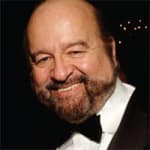 De Soto was born in Arequipa, Peru. His father was a diplomat who had to go into exile 1948, following a military coup. As a result, de Soto was educated in Switzerland, where he attended the International School of Geneva, and did post-graduate work at the Graduate Institute of International Studies there. After working as a director of the Swiss Bank Corporation Consultant Group and as an economist for the General Agreement on Tariffs and Trade (GATT), de Soto returned to Peru in 1979. In 1981, he helped to found the Institute for Liberty and Democracy (ILD), in Lima. He serves as that institution's president today. Over the years, the ILD has been responsible for hundreds of initiatives, laws, and regulations that have helped to transform the Peruvian economy. After Alberto Fujimori was elected President of Peru in 1990, de Soto was appointed his Personal Representative and Principal Advisor, and was thus instrumental in bringing the economic-liberalization program in his country to fruition. For a time, de Soto was also Governor of Peru's Central Reserve Bank. He is perhaps best known for his research on the importance of land ownership---especially, having clear title---to achieving social and economic progress in developing countries. This work is presented in de Soto's book, The Mystery of Capital: Why Capitalism Triumphs in the West and Fails Everywhere Else (Basic Books, 2000).
De Soto was born in Arequipa, Peru. His father was a diplomat who had to go into exile 1948, following a military coup. As a result, de Soto was educated in Switzerland, where he attended the International School of Geneva, and did post-graduate work at the Graduate Institute of International Studies there. After working as a director of the Swiss Bank Corporation Consultant Group and as an economist for the General Agreement on Tariffs and Trade (GATT), de Soto returned to Peru in 1979. In 1981, he helped to found the Institute for Liberty and Democracy (ILD), in Lima. He serves as that institution's president today. Over the years, the ILD has been responsible for hundreds of initiatives, laws, and regulations that have helped to transform the Peruvian economy. After Alberto Fujimori was elected President of Peru in 1990, de Soto was appointed his Personal Representative and Principal Advisor, and was thus instrumental in bringing the economic-liberalization program in his country to fruition. For a time, de Soto was also Governor of Peru's Central Reserve Bank. He is perhaps best known for his research on the importance of land ownership---especially, having clear title---to achieving social and economic progress in developing countries. This work is presented in de Soto's book, The Mystery of Capital: Why Capitalism Triumphs in the West and Fails Everywhere Else (Basic Books, 2000).
- De Soto is also featured in our article: "The Top 50 Economists from 1900 to Present"
- Web resource: Hernando de Soto's Institute for Liberty and Democracy Home Page
40. Esther Duflo (b. 1972)
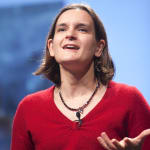 Duflo was born in Paris. She was educated at the Lycée Henri IV and the École Normale Supérieure there, and then received her Ph.D. in economics from MIT, in Cambridge, MA, in 1999. Today, she is Professor of Poverty Alleviation and Development Economics at MIT, as well a research associate at NBER, and the co-founder and director of the Abdul Latif Jameel Poverty Action Lab at MIT. Her research focuses on policy evaluation, microeconomics, and behavioral economics in developing countries, including such issues as household behavior, health, education, and access to finance. Duflo has been one of the major advocates of field experiments as an important methodological component in the investigation of causal relationships in economic processes. Her empirical work in the developing world has documented the beneficial impact of such factors as good governance, performance-based pay for teachers, use of modest incentives in public health initiatives, and vocational training and counseling for the unemployed. It has also led to a new emphasis on cost-effectiveness analysis in the design of international-aid initiatives. She was discussed these and other finding in her recent book, Poor Economics: A Radical Rethinking of the Way to Fight Global Poverty (with Abhijit V. Banerjee) (PublicAffairs, 2011).
Duflo was born in Paris. She was educated at the Lycée Henri IV and the École Normale Supérieure there, and then received her Ph.D. in economics from MIT, in Cambridge, MA, in 1999. Today, she is Professor of Poverty Alleviation and Development Economics at MIT, as well a research associate at NBER, and the co-founder and director of the Abdul Latif Jameel Poverty Action Lab at MIT. Her research focuses on policy evaluation, microeconomics, and behavioral economics in developing countries, including such issues as household behavior, health, education, and access to finance. Duflo has been one of the major advocates of field experiments as an important methodological component in the investigation of causal relationships in economic processes. Her empirical work in the developing world has documented the beneficial impact of such factors as good governance, performance-based pay for teachers, use of modest incentives in public health initiatives, and vocational training and counseling for the unemployed. It has also led to a new emphasis on cost-effectiveness analysis in the design of international-aid initiatives. She was discussed these and other finding in her recent book, Poor Economics: A Radical Rethinking of the Way to Fight Global Poverty (with Abhijit V. Banerjee) (PublicAffairs, 2011).
- Web resource: Esther Duflo's Home Page
41. William R. Easterly (b. 1957)
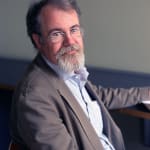 Easterly was born in Morgantown, WV, and raised in Bowling Green, OH. He received his BA from Bowling Green State University in 1979, and his Ph.D. in economics from MIT in 1985. He spent many years as a research economist at the World Bank, and has taught at the Paul H. Nitze School of Advanced International Studies (an affiliate of Johns Hopkins University), in Washington, DC. He is presently Professor of Economics at New York University, as well as Co-Director of the Development Research Institute there. He is also a senior fellow at the Brookings Institution, in Washington. Easterly's work has focused on the conditions necessary to unleash the power of entrepreneurship in the developing world. He has been highly critical of top-down planning---of whatever sort---as a panacea for world poverty, and has argued that many foreign-aid efforts are little more than messianic exercises in narcissism that unconsciously replicate the paternalistic attitudes of the colonial past. He is editor of Reinventing Foreign Aid (MIT Press, 2008), and author of The Elusive Quest for Growth: Economists' Adventures and Misadventures in the Tropics (MIT Press, 2001) and The White Man's Burden: Why the West's Efforts to Aid the Rest Have Done So Much Ill and So Little Good (Penguin, 2006).
Easterly was born in Morgantown, WV, and raised in Bowling Green, OH. He received his BA from Bowling Green State University in 1979, and his Ph.D. in economics from MIT in 1985. He spent many years as a research economist at the World Bank, and has taught at the Paul H. Nitze School of Advanced International Studies (an affiliate of Johns Hopkins University), in Washington, DC. He is presently Professor of Economics at New York University, as well as Co-Director of the Development Research Institute there. He is also a senior fellow at the Brookings Institution, in Washington. Easterly's work has focused on the conditions necessary to unleash the power of entrepreneurship in the developing world. He has been highly critical of top-down planning---of whatever sort---as a panacea for world poverty, and has argued that many foreign-aid efforts are little more than messianic exercises in narcissism that unconsciously replicate the paternalistic attitudes of the colonial past. He is editor of Reinventing Foreign Aid (MIT Press, 2008), and author of The Elusive Quest for Growth: Economists' Adventures and Misadventures in the Tropics (MIT Press, 2001) and The White Man's Burden: Why the West's Efforts to Aid the Rest Have Done So Much Ill and So Little Good (Penguin, 2006).
- Web resource: William R. Easterly's Home Page
42. Roger W. Garrison (b. 1944)
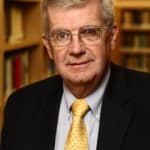 Garrison was born in Joplin, MO. He received his BS in electrical engineering from the University of Missouri in 1967, and his Ph.D. in economics from the University of Virginia in 1981. During the early 1970s, he worked as a research associate for the Federal Reserve Bank of Kansas City. Since 1978, he has taught at Auburn University, where he has been Professor of Economics since 1996. He has also held visiting positions at the London School of Economics and New York University. Garrison's research focuses on the link between microeconomics and macroeconomics. Specifically, he has shown that one of the chief weaknesses of modern macroeconomic theorizing lies in its lack of any real coupling between short-term and long-term economic processes. Building upon the Austrian capital theory originated by Ludwig von Mises and F.A. Hayek, he has elaborated a model of the intertemporal structure of capital that repairs this lacuna in the neo-classical theory. Garrison is author of Time and Money: The Macroeconomics of Capital Structure (Routledge, 2001) and is also co-editor of the forthcoming Edward Elgar Companion to Hayekian Economics.
Garrison was born in Joplin, MO. He received his BS in electrical engineering from the University of Missouri in 1967, and his Ph.D. in economics from the University of Virginia in 1981. During the early 1970s, he worked as a research associate for the Federal Reserve Bank of Kansas City. Since 1978, he has taught at Auburn University, where he has been Professor of Economics since 1996. He has also held visiting positions at the London School of Economics and New York University. Garrison's research focuses on the link between microeconomics and macroeconomics. Specifically, he has shown that one of the chief weaknesses of modern macroeconomic theorizing lies in its lack of any real coupling between short-term and long-term economic processes. Building upon the Austrian capital theory originated by Ludwig von Mises and F.A. Hayek, he has elaborated a model of the intertemporal structure of capital that repairs this lacuna in the neo-classical theory. Garrison is author of Time and Money: The Macroeconomics of Capital Structure (Routledge, 2001) and is also co-editor of the forthcoming Edward Elgar Companion to Hayekian Economics.
- Web resource: Roger W. Garrison's Home Page
43. Dambisa Moyo (b. 1969)
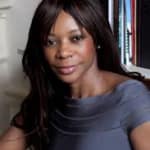 Moyo was born and raised in Lusaka, Zambia. She holds a BS degree in chemistry and an MBA in finance from American University in Washington, DC. In 1997, she received a Master of Public Administration degree from the Kennedy School of Government at Harvard University, and in 2002, she received a Ph.D. in economics from Oxford University. She has worked as a consultant for the World Bank and as an economist for Goldman Sachs. Moyo has written three books on global economic issues, but she is best known for Dead Aid: Why Aid Is Not Working and How There Is a Better Way for Africa (Farrar, Straus and Giroux, 2009). In this work, she sharply contrasts the fate of those African countries that have rejected reliance on foreign aid with those that have become aid-dependent. The former have prospered, while the latter have seen poverty increase. Moyo explains why foreign aid condemns developing nations to market distortion, corruption, and ever-deepening misery, leaving them dependent on the vicious foreign-aid cycle and foreclosing all prospects of real development.
Moyo was born and raised in Lusaka, Zambia. She holds a BS degree in chemistry and an MBA in finance from American University in Washington, DC. In 1997, she received a Master of Public Administration degree from the Kennedy School of Government at Harvard University, and in 2002, she received a Ph.D. in economics from Oxford University. She has worked as a consultant for the World Bank and as an economist for Goldman Sachs. Moyo has written three books on global economic issues, but she is best known for Dead Aid: Why Aid Is Not Working and How There Is a Better Way for Africa (Farrar, Straus and Giroux, 2009). In this work, she sharply contrasts the fate of those African countries that have rejected reliance on foreign aid with those that have become aid-dependent. The former have prospered, while the latter have seen poverty increase. Moyo explains why foreign aid condemns developing nations to market distortion, corruption, and ever-deepening misery, leaving them dependent on the vicious foreign-aid cycle and foreclosing all prospects of real development.
- Web resource: Dambisa Moyo's Home Page
FIELDS MEDAL FOR MATHEMATICS
44. Alessio Figalli (b. 1984) NEW
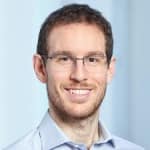 Figalli was born in Rome. In 2007, he received his Ph.D. in the field of the calculus of variations and optimal control jointly from the Scuola Normale Superiore di Pisa, Italy, and from the École Normale Supérieure de Lyon, France. At the former institution, he studied with Luigi Ambrosio, while at the latter he worked under Cédric Villani. He has held positions at the Centre National de la Recherche Scientifique (CNRS) in Paris, at the École polytechnique near Paris, and at the University of Texas at Austin in the U.S. Since 2016, Figalli has held a chaired professorship in the Department of Mathematics at ETH Zurich, in Switzerland (Albert Einstein's old alma mater). Figalli has made numerous seminal contributions using optimal transport techniques, especially the regularity theory of optimal transport maps. For example, he has demonstrated the connections of such maps to Monge-Ampère type equations. He has also used similar techniques to get improved versions of the anisotropic isoperimetric inequality, as well as other stability results for important functional and geometric inequalities. In addition, he has demonstrated connections between the Hamilton-Jacobi equation and weak Kolmogorov-Arnold-Moser (KAM) theory. More recently, Figalli has both introduced and developed new transportation techniques to prove universality results in certain random matrix models.
Figalli was born in Rome. In 2007, he received his Ph.D. in the field of the calculus of variations and optimal control jointly from the Scuola Normale Superiore di Pisa, Italy, and from the École Normale Supérieure de Lyon, France. At the former institution, he studied with Luigi Ambrosio, while at the latter he worked under Cédric Villani. He has held positions at the Centre National de la Recherche Scientifique (CNRS) in Paris, at the École polytechnique near Paris, and at the University of Texas at Austin in the U.S. Since 2016, Figalli has held a chaired professorship in the Department of Mathematics at ETH Zurich, in Switzerland (Albert Einstein's old alma mater). Figalli has made numerous seminal contributions using optimal transport techniques, especially the regularity theory of optimal transport maps. For example, he has demonstrated the connections of such maps to Monge-Ampère type equations. He has also used similar techniques to get improved versions of the anisotropic isoperimetric inequality, as well as other stability results for important functional and geometric inequalities. In addition, he has demonstrated connections between the Hamilton-Jacobi equation and weak Kolmogorov-Arnold-Moser (KAM) theory. More recently, Figalli has both introduced and developed new transportation techniques to prove universality results in certain random matrix models.
- Web resource: Alessio Figalli's Home Page
45. Kai-Wen Lan (b. 1979)
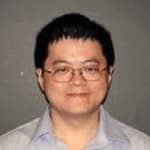 Lan was born in Taipei, Taiwan. He received his BS degree from Taiwan National University in 1999, and his Ph.D. from Harvard University in 2008. He taught for several years at Princeton University, and spent a year at the Institute for Advanced Study, in Princeton. He is currently Assistant Professor of Mathematics at the University of Minnesota. Lan works on number theory, using geometric methods to provide insight into arithmetic forms that cannot be otherwise obtained. More specifically, he studies the relations among number theory, automorphic forms, and the geometry and cohomology of Shimura (left) varieties and their compactifications.
Lan was born in Taipei, Taiwan. He received his BS degree from Taiwan National University in 1999, and his Ph.D. from Harvard University in 2008. He taught for several years at Princeton University, and spent a year at the Institute for Advanced Study, in Princeton. He is currently Assistant Professor of Mathematics at the University of Minnesota. Lan works on number theory, using geometric methods to provide insight into arithmetic forms that cannot be otherwise obtained. More specifically, he studies the relations among number theory, automorphic forms, and the geometry and cohomology of Shimura (left) varieties and their compactifications.
- Web resource: Kai-Wen Lan's Home Page
46. Ciprian Manolescu (b. 1978) NEW
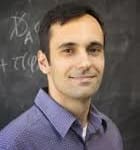 Manolescu was born in Piteşti, Romania. He received his PhD. in 2004 from Harvard University, where he worked with Peter B. Kronheimer. He is the only person ever to have submitted perfect papers to three consecutive International Mathematical Olympiads---at Toronto in 1995; at Mumbai in 1996; and at Mar del Plata (Argentina) in 1997. Manolescu wrote his dissertation on topological quantum field theory. He held positions at the Clay Mathematics Institute, Princeton, the Institute for Advanced Study, and Columbia, before moving in 2008 to the University of California, Los Angeles, where he is now Professor of Mathematics. He works on such topics as gauge theory, symplectic geometry, and low-dimensional topology. Recently, he has won international acclaim both for his key role in the development of combinatorial Heegaard Floer homology and for his refutation of the century-old triangulation conjecture for five-dimensional and higher manifolds. Manolescu is also interested in the application of topology to distributed computing.
Manolescu was born in Piteşti, Romania. He received his PhD. in 2004 from Harvard University, where he worked with Peter B. Kronheimer. He is the only person ever to have submitted perfect papers to three consecutive International Mathematical Olympiads---at Toronto in 1995; at Mumbai in 1996; and at Mar del Plata (Argentina) in 1997. Manolescu wrote his dissertation on topological quantum field theory. He held positions at the Clay Mathematics Institute, Princeton, the Institute for Advanced Study, and Columbia, before moving in 2008 to the University of California, Los Angeles, where he is now Professor of Mathematics. He works on such topics as gauge theory, symplectic geometry, and low-dimensional topology. Recently, he has won international acclaim both for his key role in the development of combinatorial Heegaard Floer homology and for his refutation of the century-old triangulation conjecture for five-dimensional and higher manifolds. Manolescu is also interested in the application of topology to distributed computing.
- Web resource: Ciprian Manolescu's Home Page
47. Sophie Morel (b. 1979) NEW
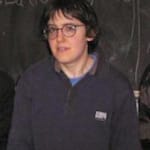 Morel was born in Issy-les-Moulineaux, a southern suburb of Paris, where she attended the École Normale Supérieure. She received her PhD. in 2005 from Université de Paris-Sud. In her dissertation, written under the supervision of Gérard Laumon, Morel advanced the Langlands program. After graduation, she served for several years as a member of the Institute for Advanced Study in Princeton, New Jersey, and as a Clay Fellow at the Clay Mathematics Institute in Peterborough, New Hampshire. In 2009, Morel was appointed a Professor of Mathematics at Harvard University---the first woman in Harvard's history ever to be tenured in the math department. In 2012, she moved to Princeton University, where she is now Professor of Mathematics. Morel continues to work primarily on the Langlands program. First proposed by Robert Langlands in the 1960s---and sometimes known as the "grand unified theory of mathematics"---the program is a vast network of far-reaching and influential conjectures (some of them now theorems) concerning relations among objects from several different fields of mathematics, notably algebraic number theory, arithmetic geometry, and analysis. When she is not advancing the Langlands program, Morel likes to learning foreign languages so she can read novels written in the language. She also runs in marathons and likes to hike in the mountains of her native France.
Morel was born in Issy-les-Moulineaux, a southern suburb of Paris, where she attended the École Normale Supérieure. She received her PhD. in 2005 from Université de Paris-Sud. In her dissertation, written under the supervision of Gérard Laumon, Morel advanced the Langlands program. After graduation, she served for several years as a member of the Institute for Advanced Study in Princeton, New Jersey, and as a Clay Fellow at the Clay Mathematics Institute in Peterborough, New Hampshire. In 2009, Morel was appointed a Professor of Mathematics at Harvard University---the first woman in Harvard's history ever to be tenured in the math department. In 2012, she moved to Princeton University, where she is now Professor of Mathematics. Morel continues to work primarily on the Langlands program. First proposed by Robert Langlands in the 1960s---and sometimes known as the "grand unified theory of mathematics"---the program is a vast network of far-reaching and influential conjectures (some of them now theorems) concerning relations among objects from several different fields of mathematics, notably algebraic number theory, arithmetic geometry, and analysis. When she is not advancing the Langlands program, Morel likes to learning foreign languages so she can read novels written in the language. She also runs in marathons and likes to hike in the mountains of her native France.
- Web resource: Sophie Morel's Home Page
48. Peter Scholze (b. 1987) NEW
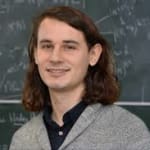 Scholze was born in Dresden, in what was at the time the German Democratic Republic (East Germany). The Berlin Wall fell when he was two years old and Germany was reunified the following year. Scholze received his secondary education at the prestigious Heinrich-Hertz-Gymnasium in Berlin. He obtained his PhD. from the University of Bonn in 2012, under the supervision of Michael Rapoport. Immediately after completing his dissertation in 2012, he was appointed a full Professor at the internationally renowned Mathematical Institute of the University of Bonn, where he still works. Already in 2010, while still a graduate student, Scholze had radically simplified the Harris-Taylor proof in number theory from 288 pages to 37 pages. In his dissertation, he created an entirely new branch of mathematics---perfectoid spaces---which are a class of algebraic-geometric objects within in the domain of p-adic geometry. Perfectoid spaces have turned out to have many unexpected and far-reaching applications in a wide variety of areas within the Langlands program. Scholze, who has been called "one of the most influential mathematicians in the world" and whose work has been said to have "really completely transformed what can be done, what we have access to," has received numerous prizes, including the New Horizons in Mathematics Breakthrough Prize for 2016 (Klarreich, 2016). He was the youngest person ever to win the prestigious Leibniz Prize (also in 2016), an award usually conferred for lifetime achievement.
Scholze was born in Dresden, in what was at the time the German Democratic Republic (East Germany). The Berlin Wall fell when he was two years old and Germany was reunified the following year. Scholze received his secondary education at the prestigious Heinrich-Hertz-Gymnasium in Berlin. He obtained his PhD. from the University of Bonn in 2012, under the supervision of Michael Rapoport. Immediately after completing his dissertation in 2012, he was appointed a full Professor at the internationally renowned Mathematical Institute of the University of Bonn, where he still works. Already in 2010, while still a graduate student, Scholze had radically simplified the Harris-Taylor proof in number theory from 288 pages to 37 pages. In his dissertation, he created an entirely new branch of mathematics---perfectoid spaces---which are a class of algebraic-geometric objects within in the domain of p-adic geometry. Perfectoid spaces have turned out to have many unexpected and far-reaching applications in a wide variety of areas within the Langlands program. Scholze, who has been called "one of the most influential mathematicians in the world" and whose work has been said to have "really completely transformed what can be done, what we have access to," has received numerous prizes, including the New Horizons in Mathematics Breakthrough Prize for 2016 (Klarreich, 2016). He was the youngest person ever to win the prestigious Leibniz Prize (also in 2016), an award usually conferred for lifetime achievement.
- Reference entry: Erica Klarreich, "The Oracle of Arithmetic" (Quanta Magazine, 2016).
- Web resource: Peter Scholze's Home Page
49. Akshay Venkatesh (b. 1981)
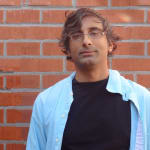 Venkatesh was born in New Delhi, India, and raised in Perth, Australia. He won a bronze medal at the International Mathematics Olympiad at the age of 12. He graduated from the University of Western Australia with First Class Honours in Pure Mathematics in 1997, the youngest such graduate in the history of that institution. He received his Ph.D. in 1998 from Princeton University, where he studied under Peter Sarnak. He did postdoctoral work at MIT, and since 2008 has been a professor at Stanford University. Venkatesh's research interests focus the enumeration of arithmetic objects using upper bounds for the number of rational points on algebraic varieties, and also on the analytic theory of automorphic forms. He has a special interest in the way the latter are related to quantum chaos, geodesic flows, and L-functions, as well as their applications to spectral theory and equidistribution.
Venkatesh was born in New Delhi, India, and raised in Perth, Australia. He won a bronze medal at the International Mathematics Olympiad at the age of 12. He graduated from the University of Western Australia with First Class Honours in Pure Mathematics in 1997, the youngest such graduate in the history of that institution. He received his Ph.D. in 1998 from Princeton University, where he studied under Peter Sarnak. He did postdoctoral work at MIT, and since 2008 has been a professor at Stanford University. Venkatesh's research interests focus the enumeration of arithmetic objects using upper bounds for the number of rational points on algebraic varieties, and also on the analytic theory of automorphic forms. He has a special interest in the way the latter are related to quantum chaos, geodesic flows, and L-functions, as well as their applications to spectral theory and equidistribution.
- Web resource: Akshay Venkatesh's Home Page
50. Maryna Viazovska (b. 1984) NEW
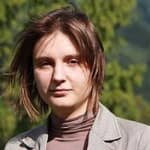 Viazovska was born in Kiev, Ukraine (which was still part of the Soviet Union at the time). She studied at the Taras Shevchenko National University and the Institute of Mathematics of the National Academy of Sciences of Ukraine, both in Kiev, before completing her doctorate in 2013 on analytic number theory at the University of Bonn, under Don Zagier. She has conducted research and taught at the Berlin Mathematical School and Humboldt University, both in Berlin, as well as Princeton University in the U.S. In 2017, she joined the École Polytechnique Fédérale de Lausanne, in Switzerland, where she is Head of the Chair of Number Theory within the Institute of Mathematics (in the School of Basic Sciences). Her two main areas of research are modular forms (an area of complex analysis with strong connections to number theory and algebraic topology) and sphere packing. Along with coauthors Danylo Radchenko, Andriy Bondarenko, and others, Viazovska has proven several conjectures in the field of spherical designs (an area of combinatorial design theory with connections to approximation theory, statistics, combinatorics, and geometry). However, she is probably best known for her 2016 solution of the centuries-old sphere-packing problem, about the densest way to pack equal-sized spheres in various manifolds. (The problem may be traced back to Johannes Kepler's 1611 conjectured solution for three dimensions, which was proven only in 1998.) Viazovska proved solutions for eight dimensions and (in collaboration with others) for 24 dimensions. Her proofs have been described as "stunningly simple" and in the tradition of the great Indian mathematician, Srinivasa Ramanujan (Klarreich, 2016).
Viazovska was born in Kiev, Ukraine (which was still part of the Soviet Union at the time). She studied at the Taras Shevchenko National University and the Institute of Mathematics of the National Academy of Sciences of Ukraine, both in Kiev, before completing her doctorate in 2013 on analytic number theory at the University of Bonn, under Don Zagier. She has conducted research and taught at the Berlin Mathematical School and Humboldt University, both in Berlin, as well as Princeton University in the U.S. In 2017, she joined the École Polytechnique Fédérale de Lausanne, in Switzerland, where she is Head of the Chair of Number Theory within the Institute of Mathematics (in the School of Basic Sciences). Her two main areas of research are modular forms (an area of complex analysis with strong connections to number theory and algebraic topology) and sphere packing. Along with coauthors Danylo Radchenko, Andriy Bondarenko, and others, Viazovska has proven several conjectures in the field of spherical designs (an area of combinatorial design theory with connections to approximation theory, statistics, combinatorics, and geometry). However, she is probably best known for her 2016 solution of the centuries-old sphere-packing problem, about the densest way to pack equal-sized spheres in various manifolds. (The problem may be traced back to Johannes Kepler's 1611 conjectured solution for three dimensions, which was proven only in 1998.) Viazovska proved solutions for eight dimensions and (in collaboration with others) for 24 dimensions. Her proofs have been described as "stunningly simple" and in the tradition of the great Indian mathematician, Srinivasa Ramanujan (Klarreich, 2016).
- Reference entry: Erica Klarreich, "Sphere Packing Solved in Higher Dimensions" (Quanta Magazine, 2016).
- Web resource: Maryna Viazovska's Home Page
Individuals Who Were on Our 2012 List
Peter Higgs (b. 1929)
WON THE NOBEL PRIZE FOR PHYSICS IN 2013
Higgs was born in Newcastle-upon-Tyne, in the UK, but was largely raised in Bristol. He received all of his higher education at King's College London. He did post-graduate work at the University of Edinburgh, then moved back and forth between teaching positions at University College London and Edinburgh, before settling in the latter university, where he is now an emeritus professor. During the 1960s, he advanced a number of proposals regarding broken symmetry in electroweak theory (the unified field theory of the electromagnetic and weak forces pioneered by Steven Weinberg, Sheldon Glashow, and Abdus Salam). Out of this work stemmed the Higgs field with its eponymous exchange particle---the Higgs boson. In July of this year (2012), it was announced that the Higgs boson had been experimentally observed at the Large Hadron Collider (right) in Geneva, Switzerland.
Mildred S. Dresselhaus (1930--2017)
CHEMISTRY - DIED IN 2017
Dresselhaus was born Mildred Spiewak in Brooklyn. She attended Hunter College of the City University of New York, Cambridge University, and Harvard University, before obtaining her Ph.D. from the University of Chicago in 1958. Since 1960, she has worked as first a researcher and then a professor at MIT, where she currently holds the titles of Institute Professor and Professor of Physics and Electrical Engineering (Emerita). The focus of Dresselhaus's work has been on materials science, especially the electronic and photoconductive properties of nanometer-scale objects. More particularly, she has been a pioneer in the study of phonons, electron-phonon interactions, and thermal transport in very thin (including single-layer) films. More particularly still, she has been a leading researcher into the band structure, thermoelectrics, and photophysics of Buckminsterfullerenes and carbon nanotubes.
Martin Karplus (b. 1930)
WON THE NOBEL PRIZE FOR CHEMISTRY IN 2013
Karplus was born in Vienna, Austria, and arrived in the United States as a refugee at the age of eight. He was educated at Harvard University and Cal-Tech, where he received his Ph.D. in 1953 under Linus Pauling. He did postdoctoral work at Oxford University with the theoretical chemist, Charles A. Coulson. After teaching at the University of Illinois and Columbia, he moved back to Harvard in 1966, where he has been the Theodore William Richards Professor of Chemistry since 1979. He is also Director of the Biophysical Chemistry Laboratory in Strasbourg, France. Karplus and his team have done path-breaking work in nuclear magnetic resonance (NMR) spectroscopy, especially in connection with hemoglobin and other biological macromolecules. The Karplus Equation, describing the correlation between coupling constants and dihedral angles in proteins subjected to NMR spectroscopy, is named after him. The Karplus group also developed CHARMM---a set of equations and a commercially available computer program for implementing them---which provided the first successful simulation of the dynamics of a biomolecule.
Chinua Achebe (1930--2013)
LITERATURE - DIED IN 2013
Achebe was born in Ogidi, in what is now Anambra State, in southeastern Nigeria. At the time, Nigeria was a British Protectorate. Achebe's native language is Igbo, but he writes in English. His parents were Christian converts, and his early education was at a local missionary school. He was later sent to the elite Government College in Umuahia for his secondary schooling, and attended the newly established University College in Ibadan, where he studied English, history, and comparative theology. He graduated in 1953, and began teaching at a missionary school in Oba. Achebe's first novel, Things Fall Apart, was published in London in 1958 to widespread acclaim. His most important subsequent novels include No Longer at Ease (1960) and The Arrow of God (1964). In them, Achebe vividly evokes both traditional Igbo village life, and the impact of British colonial rule on it. In addition to novels, he has also published poetry, short stories, children's books, literary criticism, and social, political, and historical studies. He was very engaged politically during the Biafra conflict of 1967--1970. Today, Achebe is the David and Marianna Fisher University Professor and Professor of Africana Studies at Brown University in Rhode Island.
Artur Avila Cordeiro de Melo (b. 1979)
WON THE FIELDS MEDAL IN 2014
Avila was born in Rio de Janeiro, Brazil. In 1995, at the age of 16, he won a gold medal at the International Mathematical Olympiad. In 2000, he received his Ph.D. from the National Institute for Pure and Applied Mathematics (IMPA), in Rio. He currently holds appointments with IMPA and with the National Center for Scientific Research (CNRS), in Paris. Avila is best known for his contributions to the theory of dynamical systems. More specifically, he has recently published important work on complex dynamics related to the geometry of Julia sets, on quasi-periodic Schrödinger operators, and on renormalization dynamics in the moduli space of Abelian differentials on compact Riemann surfaces.
Manjul Bhargava (b. 1974)
WON THE FIELDS MEDAL IN 2014
Bhargava was born in Hamilton, Ontario, in Canada, and grew up on Long Island, NY. He received his BA from Harvard University in 1996, and his Ph.D. from Princeton University in 2001. At Princeton, he studied under Andrew Wiles. He was hired by Princeton University in 2003 with the rank of full, tenured professor---the youngest such professor in the history of any Ivy League university. He is currently the R. Brandon Fradd Professor of Mathematics at Princeton. Bhargava is primarily known for his contributions to number theory, especially his generalization of the classical Gauss (right) composition law for quadratic forms to many other situations. One major use of his results is the parametrization of quartic and quintic orders in number fields, thus allowing the study of asymptotic behavior of arithmetic properties of these orders and fields.
Ben Joseph Green (b. 1977)
WILL BE 41 YEARS OLD IN 2018
Green was born in Bristol, in the UK. He received his BA in mathematics from Cambridge University in 1998, and earned his Ph.D. there in 2003. He is currently the Herchel Smith Professor of Pure Mathematics at Cambridge. Green's field of specialization is number theory and combinatorics. Among his most important results are an improved estimate of the size of arithmetic progressions in sumsets and his proof of the Cameron–Erdős conjecture on sum-free sets of natural numbers. He has also demonstrated that every set of primes of positive relative upper density contains an arithmetic progression of length three. This proof led to his co-discovery of the Green–Tao theorem (with Terence Tao, who received the Fields Medal in 2006), which showed that for alln, there exist infinitely many arithmetic progressions of lengthn in the prime numbers.
Jacob Lurie (b. 1977)
WILL BE 41 YEARS OLD IN 2018
Lurie was born in Washington, DC. He won a gold medal in the International Mathematics Olympiad with a perfect score, in 1994. He received his bachelor's degree from Harvard College in 2000, and his Ph.D. from MIT in 2004. He taught at MIT before moving to Harvard University, in 2009. Lurie works on infinity categories and derived algebraic geometry, applying methods from homotopy theory to obtain deeper insight into algebraic geometry. He is particularly known for his work on elliptic cohomology. He has also done important work on topological fields theories, in which he classifies extended-field theories using the language of infinity-categories.
Joseph M. Teran (b. 1977)
WILL BE 41 YEARS OLD IN 2018
Teran is Associate Professor of Applied Mathematics at UCLA, where he has taught since 2007. He received his BS degree from the University of California, Davis, in 2000, and his Ph.D. from Stanford University in 2005. Teran's research is focused on numerical methods for partial differential equations arising in classical physics. This includes computational solids and fluids, computational biomechanics, fracture dynamics, and multi-material interactions. An example of an important application deriving from Teran's research is virtual surgery, which allows a surgeon to practice a given procedure on the computer rather than on a cadaver or patient, confident that the physics of the virtual world will match that of the real world. Other applications of Teran's work include computer graphics and CGI film-animation techniques.
Popular with our students.
Highly informative resources to keep your education journey on track.
Take the next step toward your future with online learning.
Discover schools with the programs and courses you're interested in, and start learning today.

Where Nobel Prize Winners Invest Their Money
Source: https://thebestschools.org/magazine/people-who-deserve-nobel-prize/
Posted by: wongspermild.blogspot.com

0 Response to "Where Nobel Prize Winners Invest Their Money"
Post a Comment